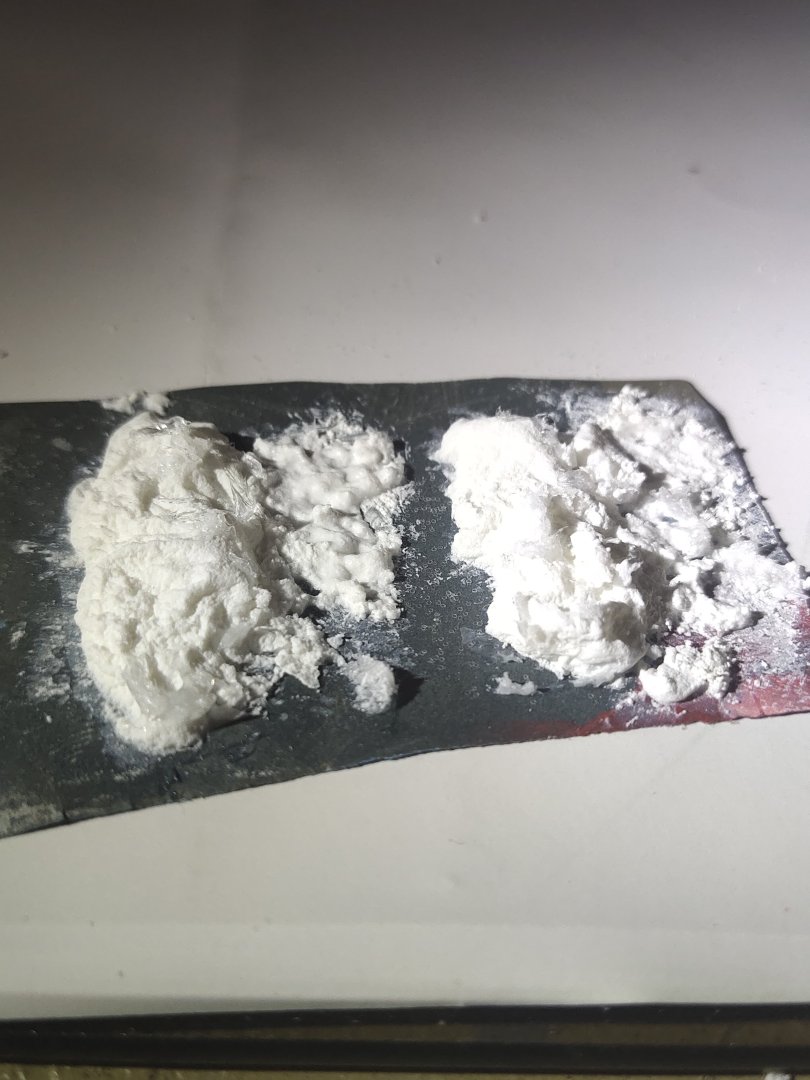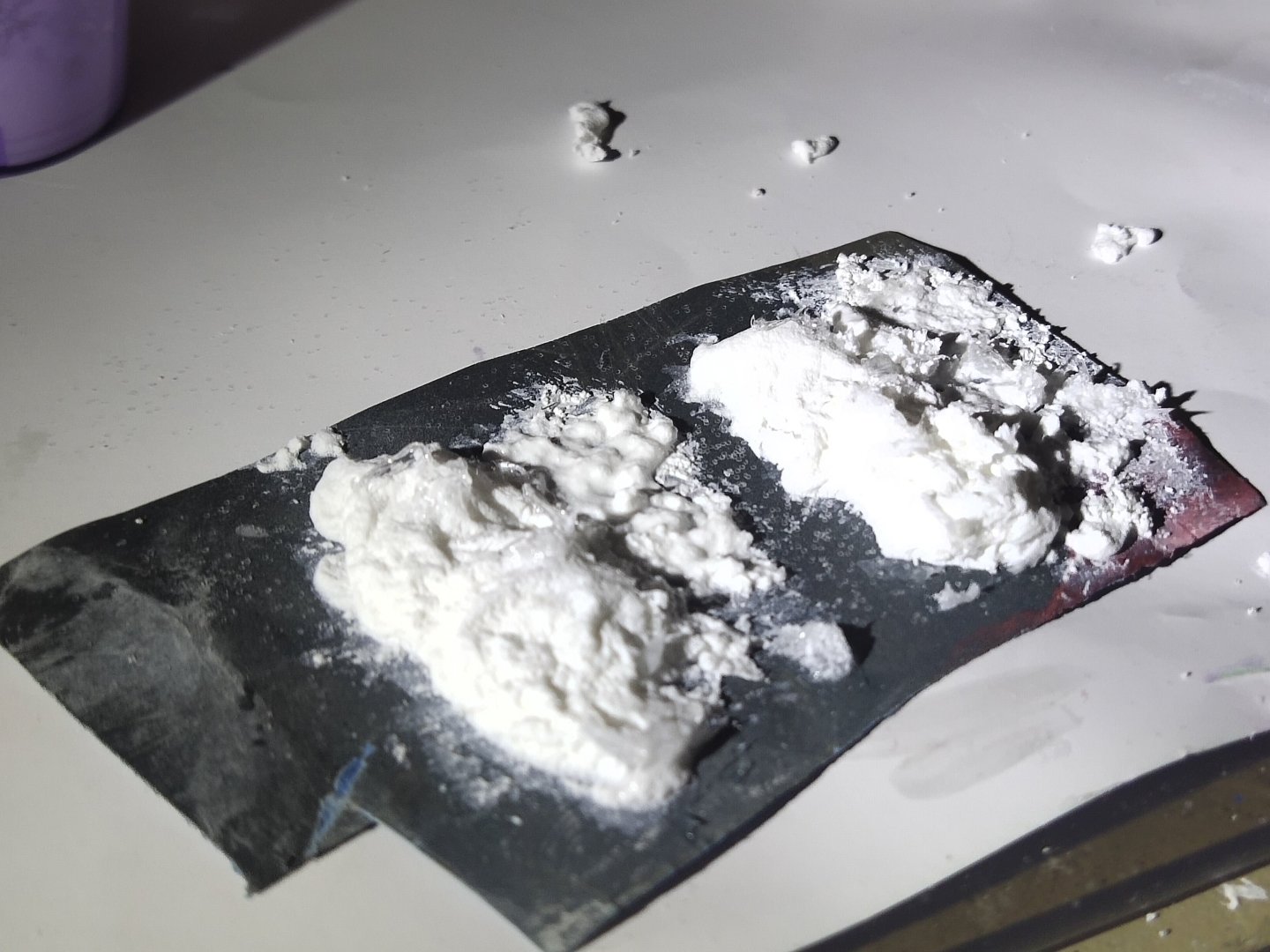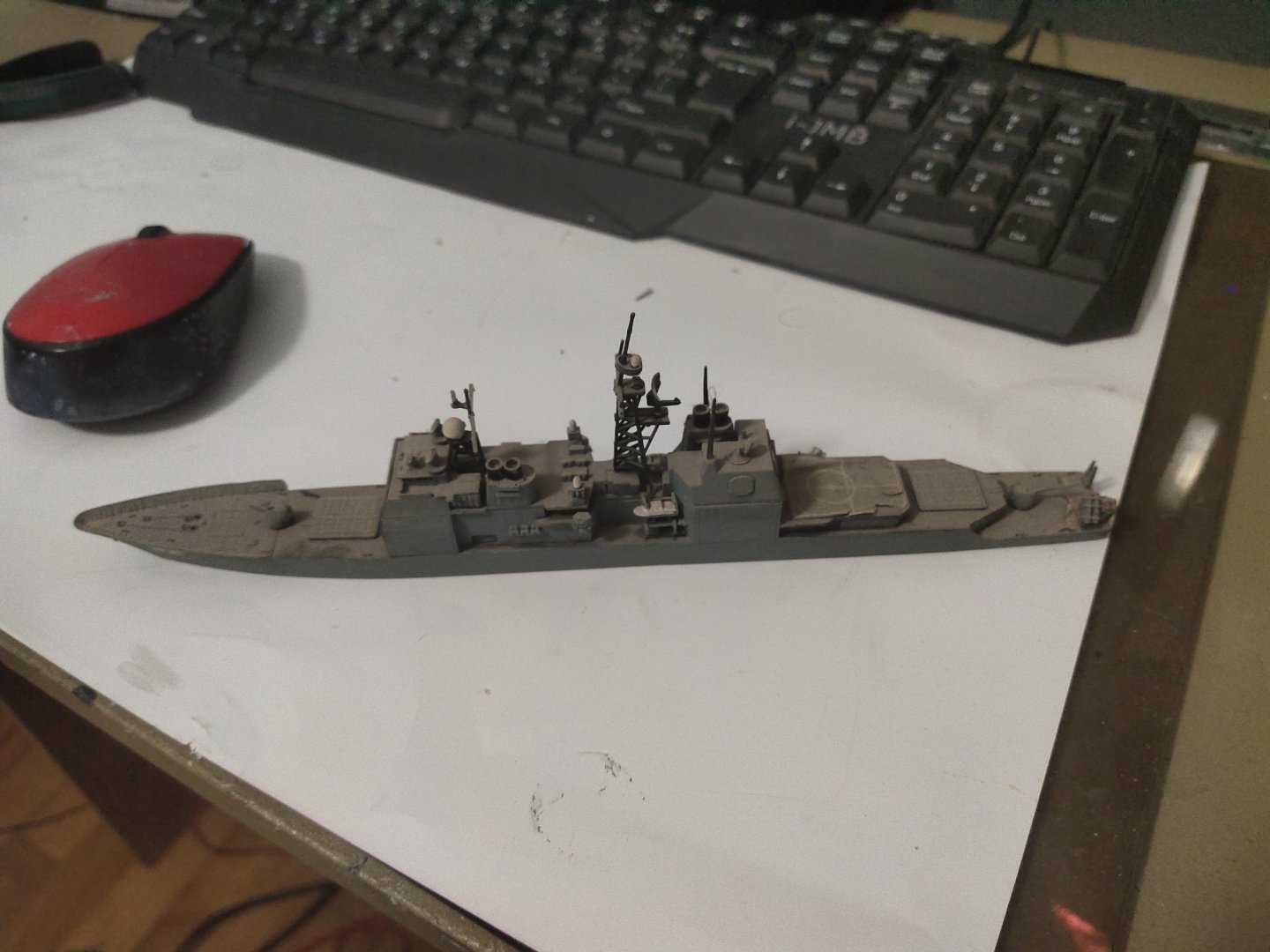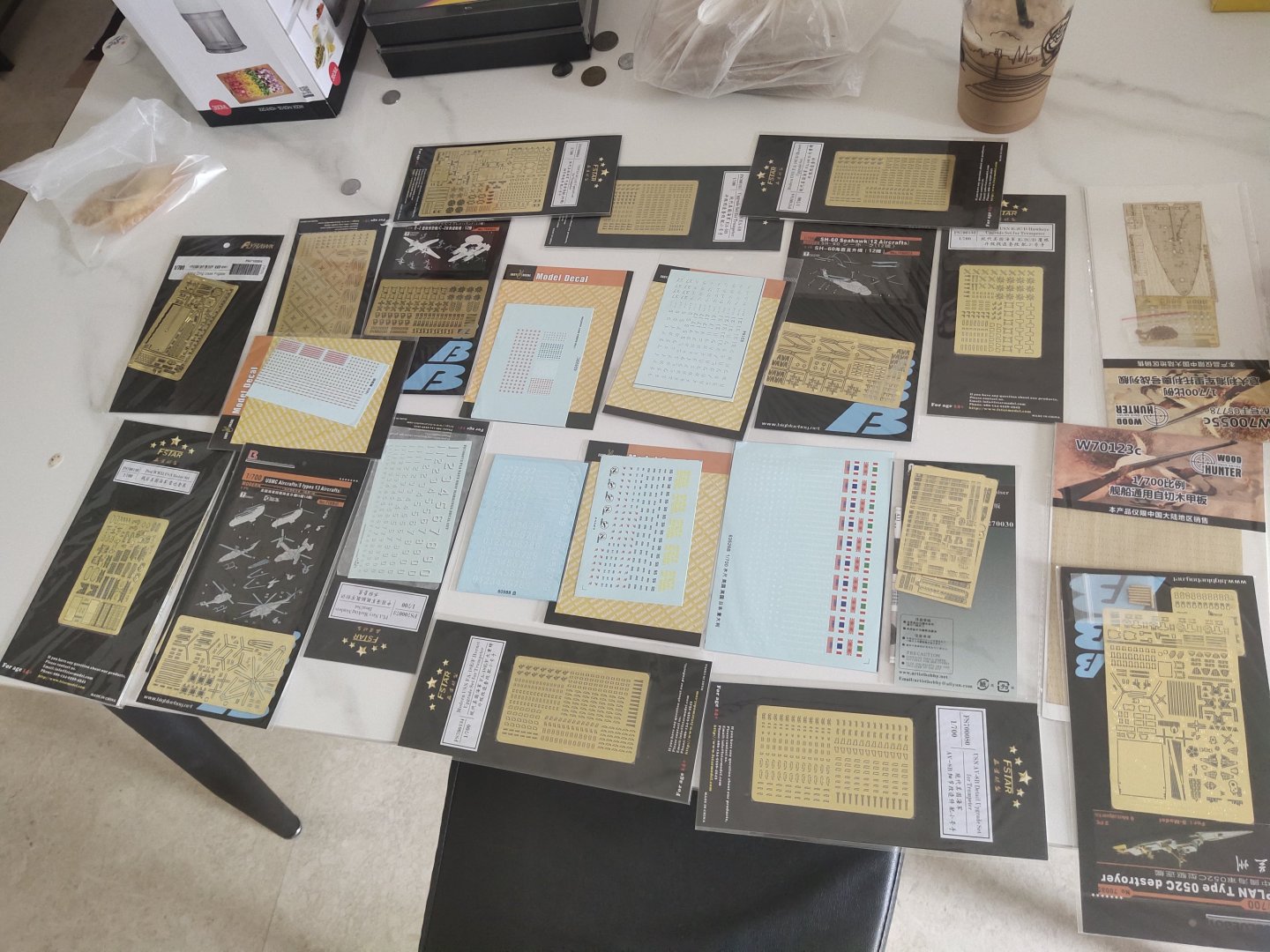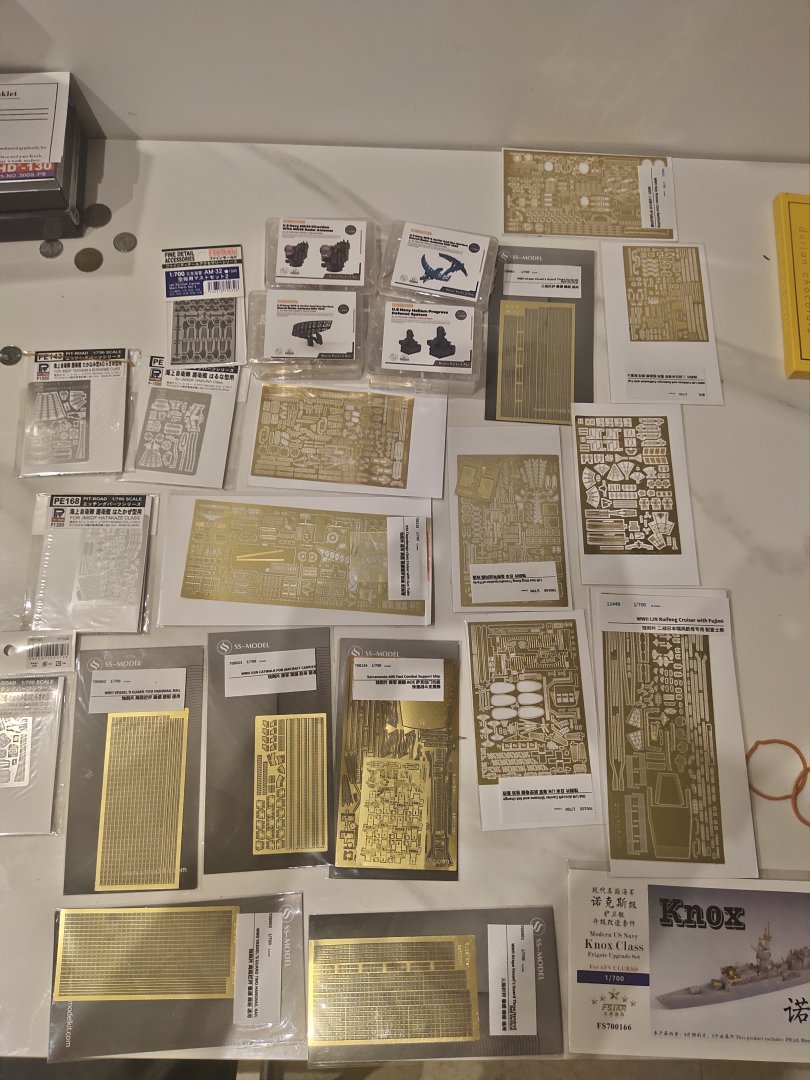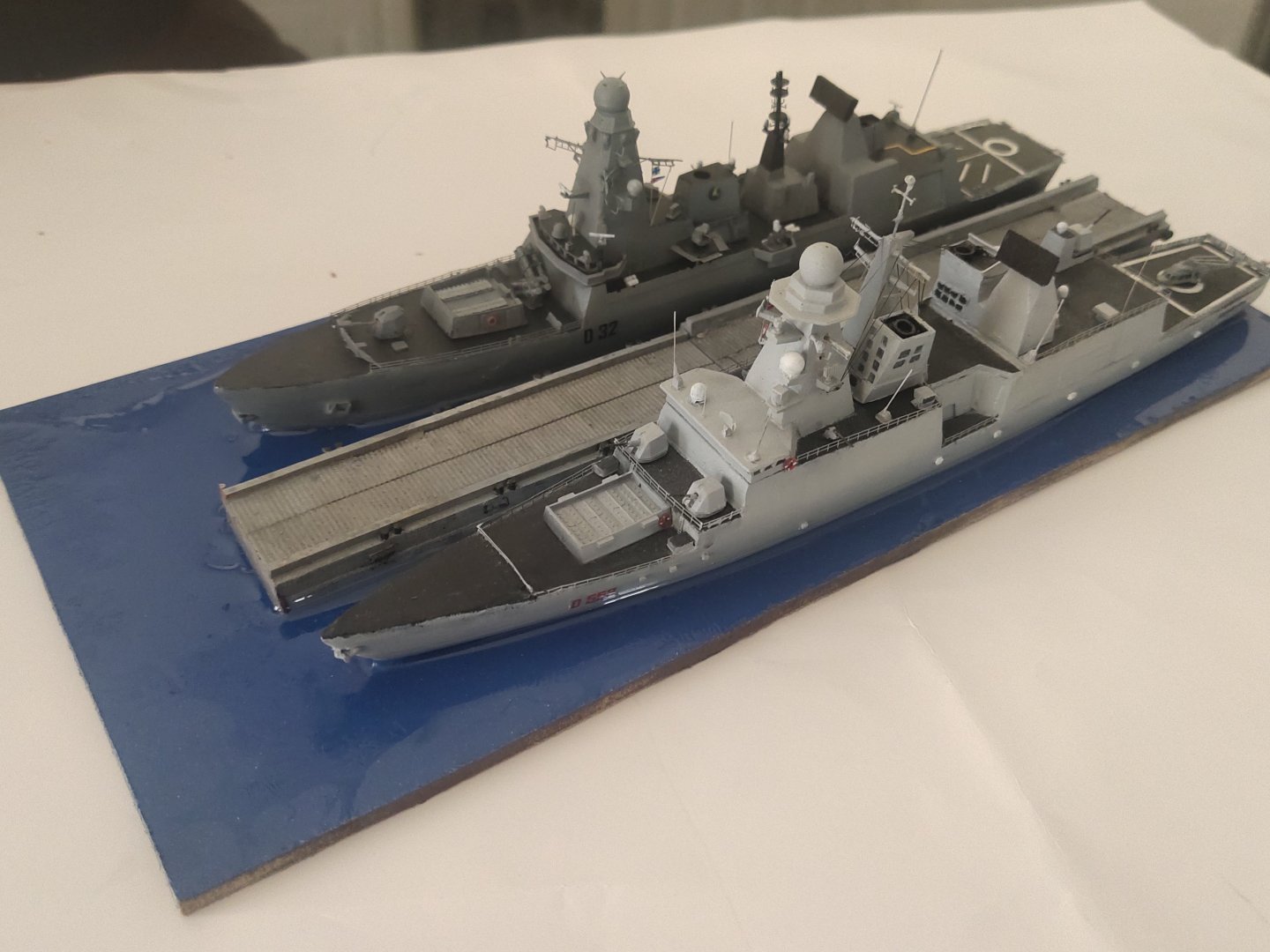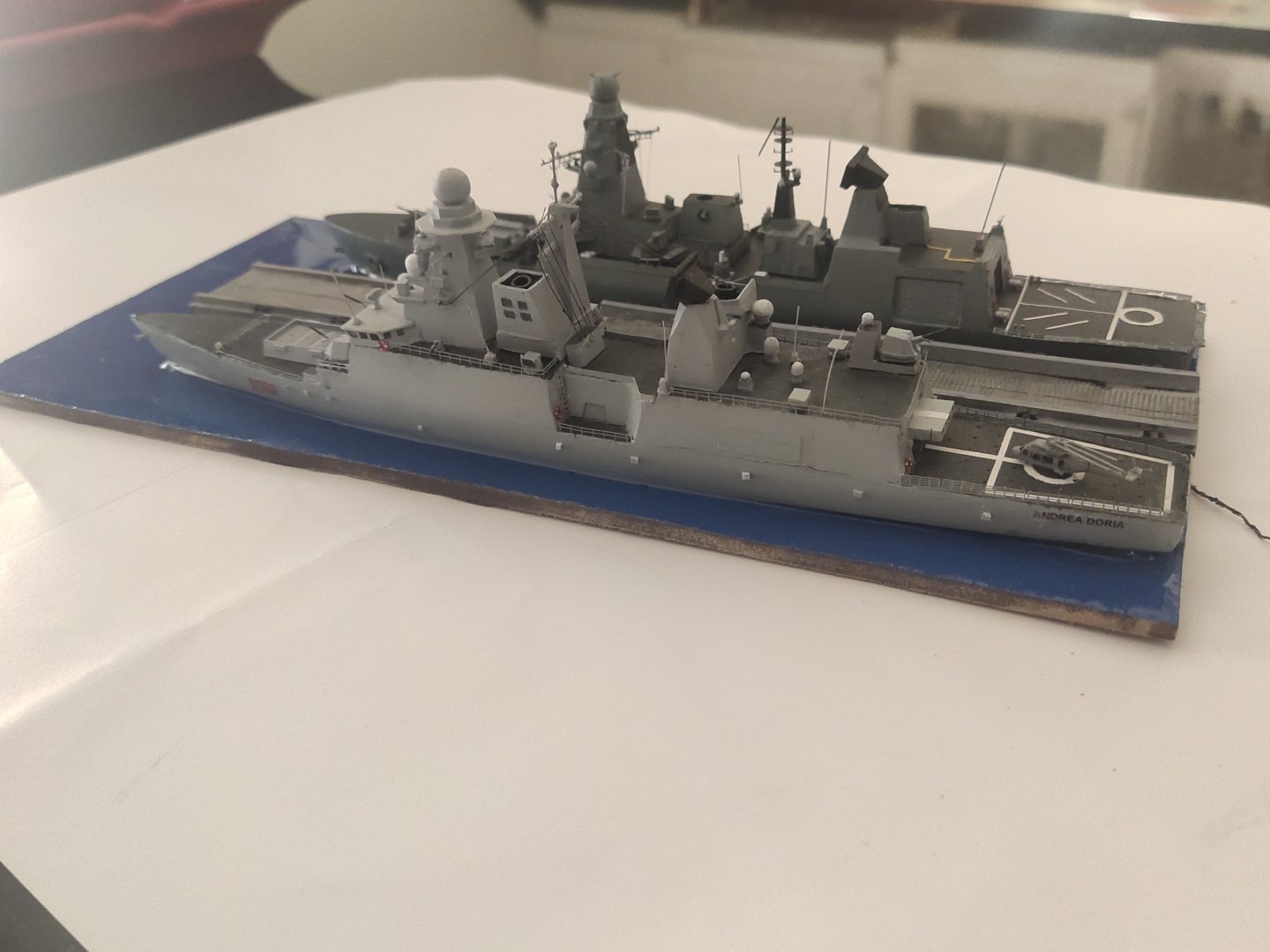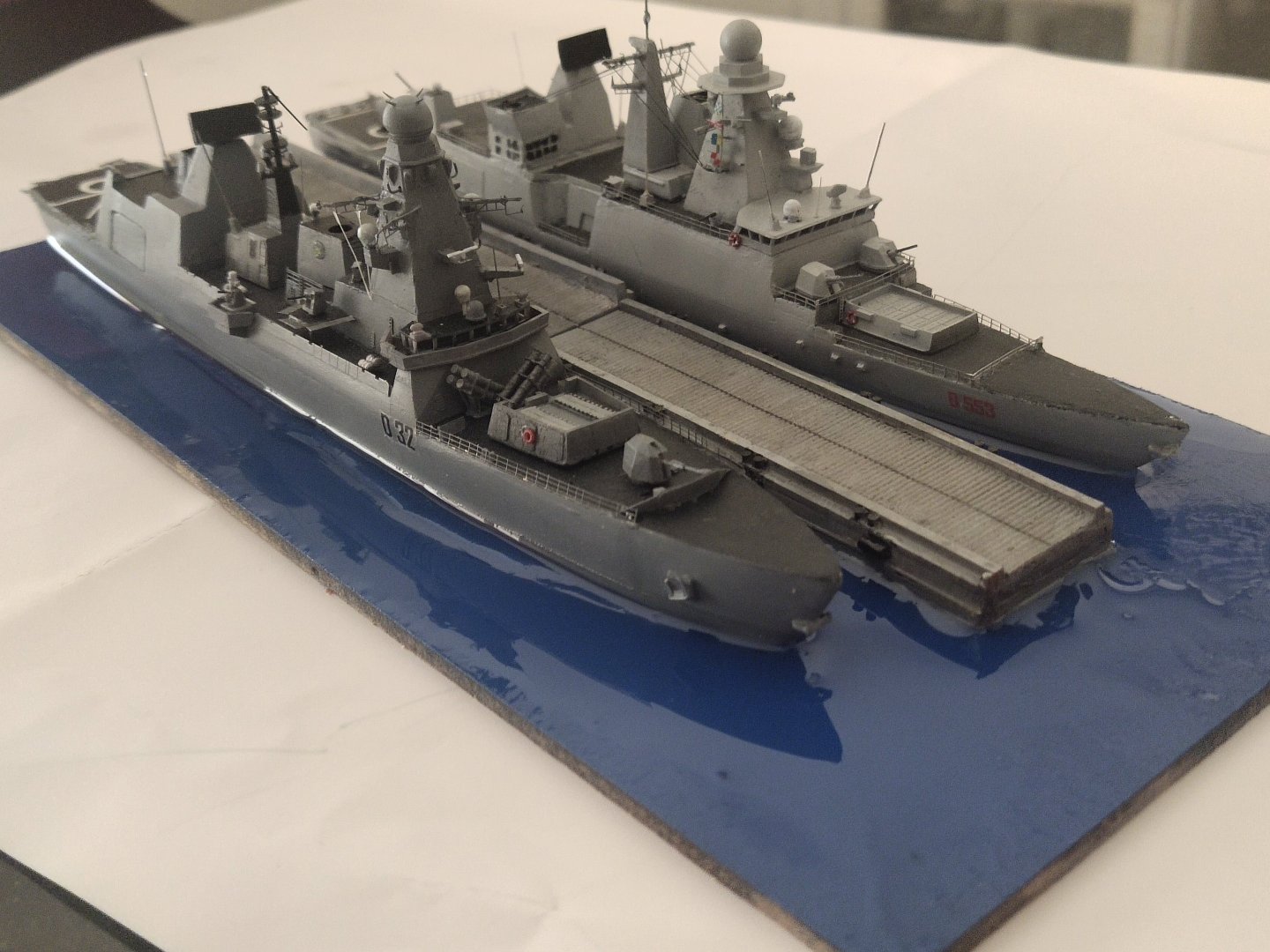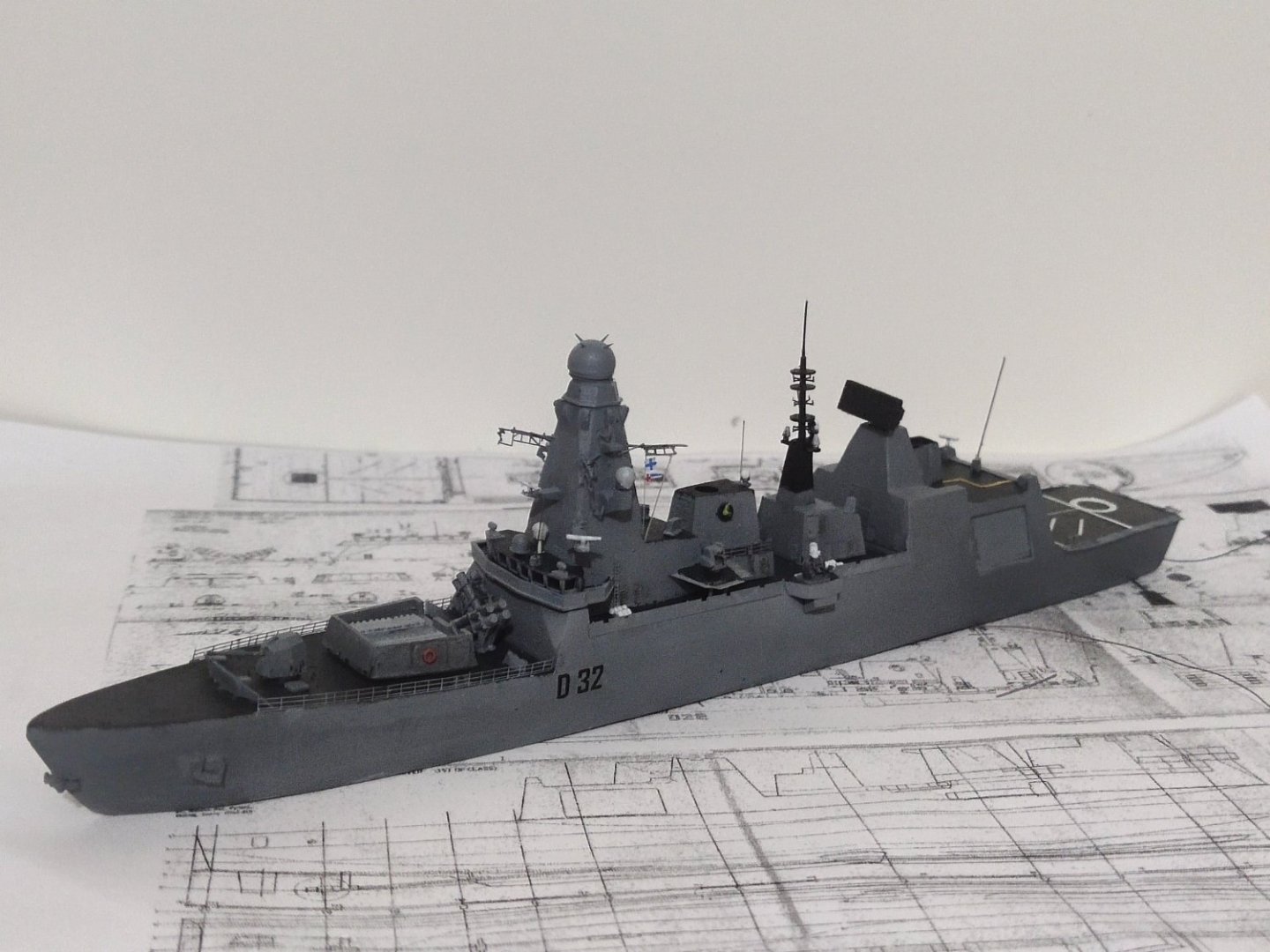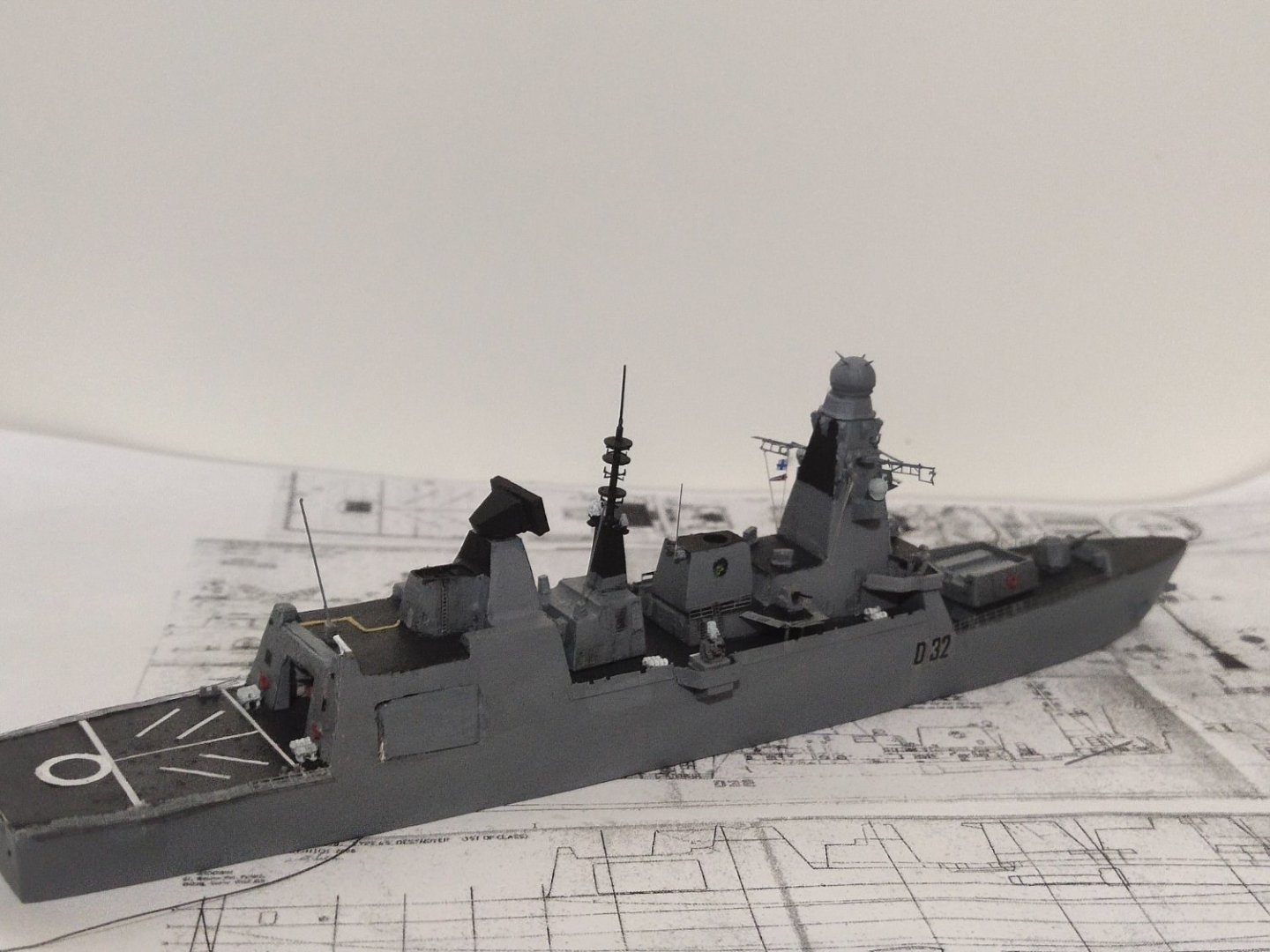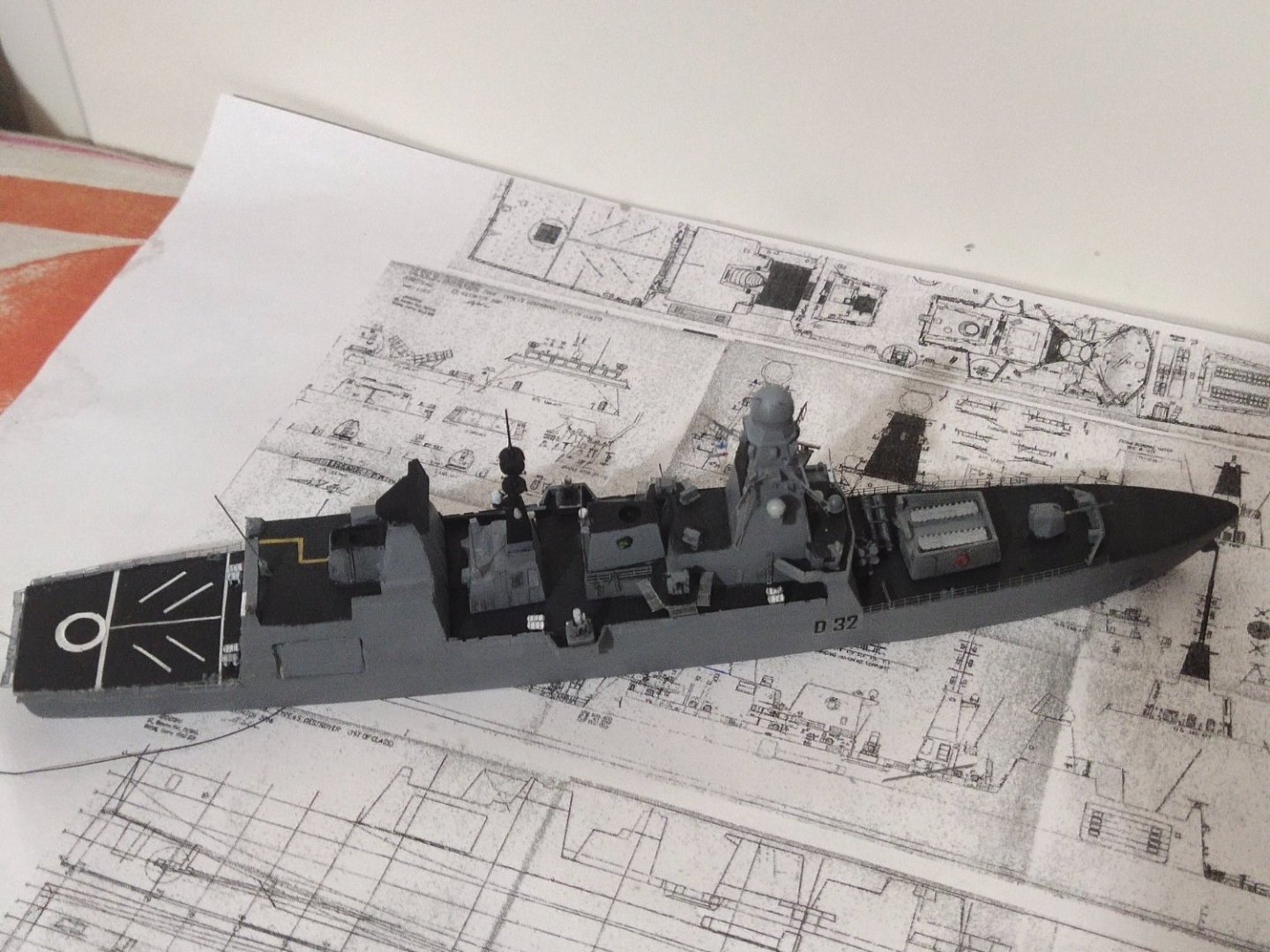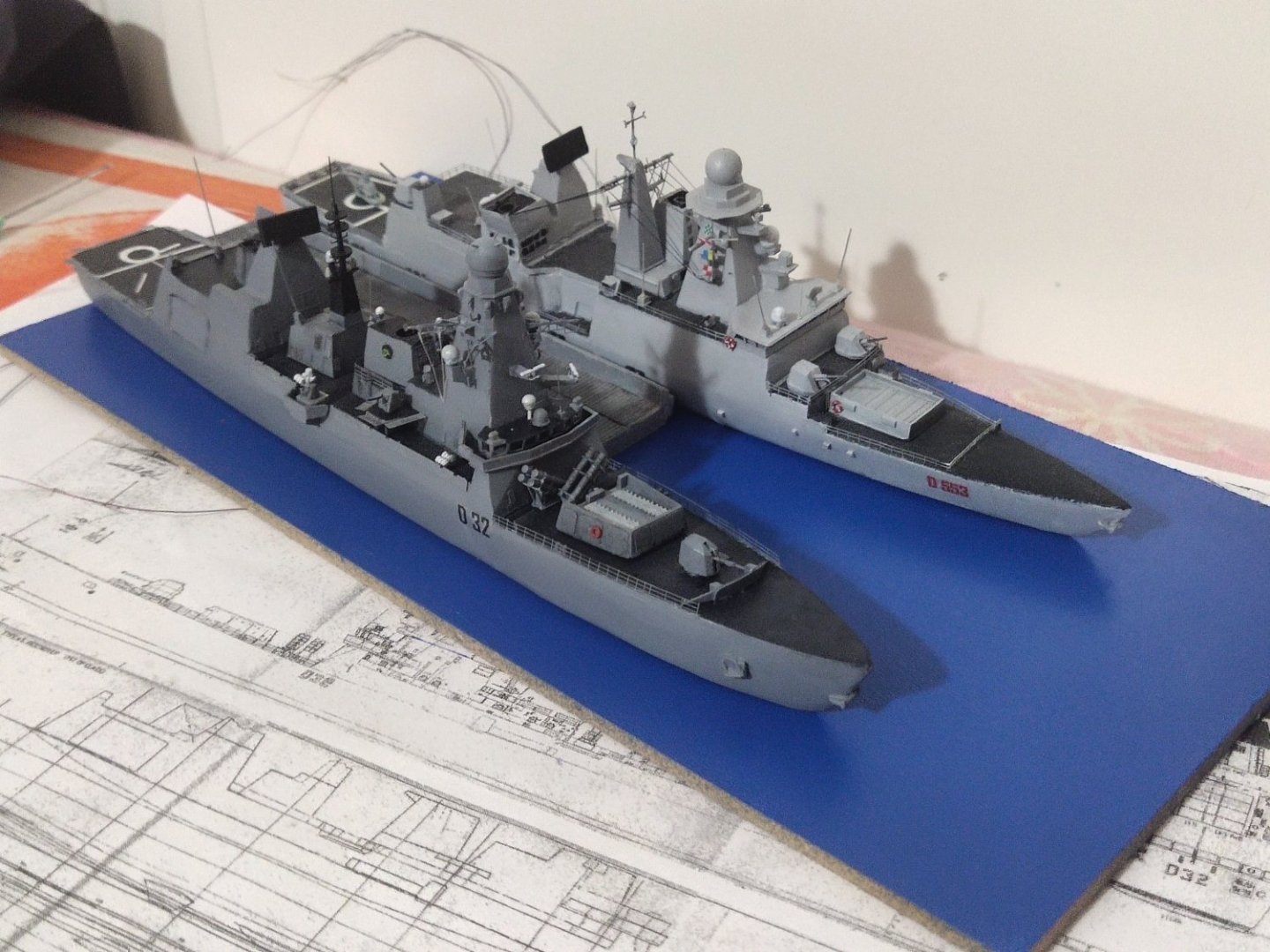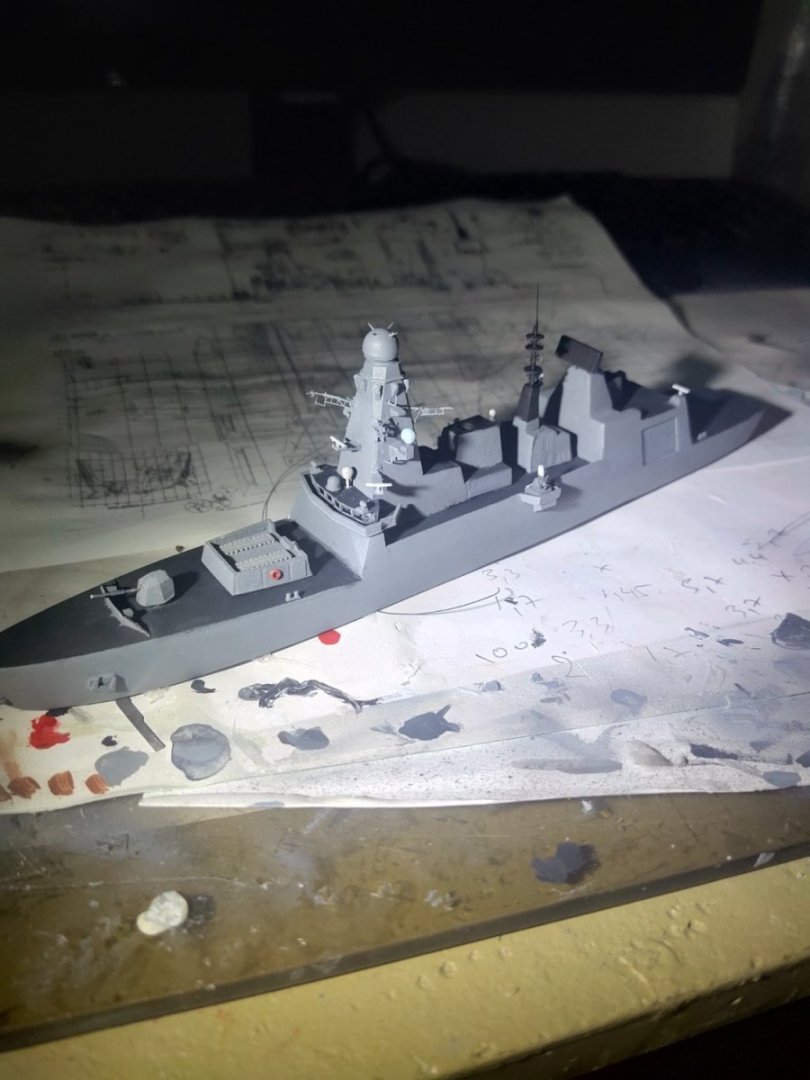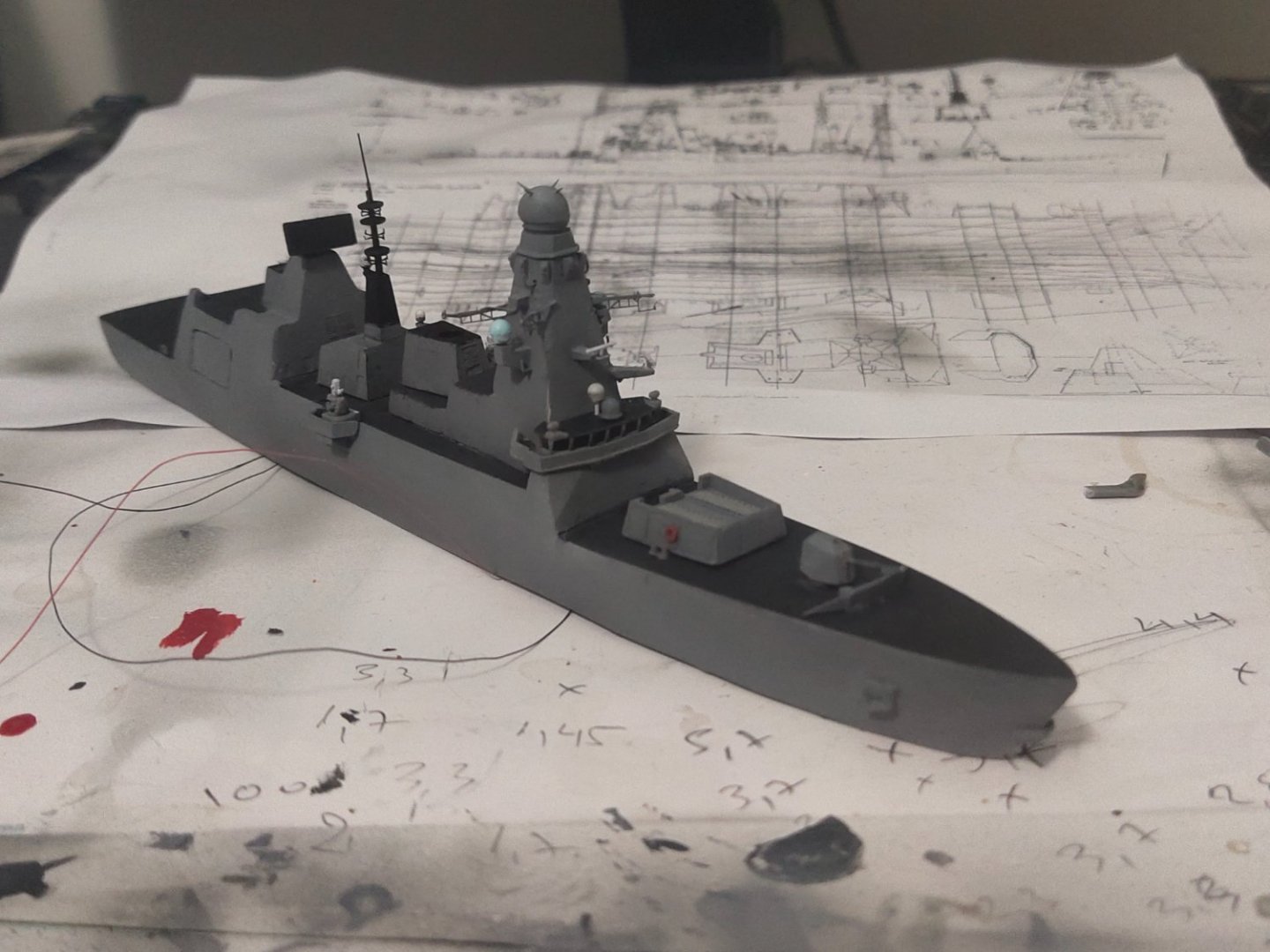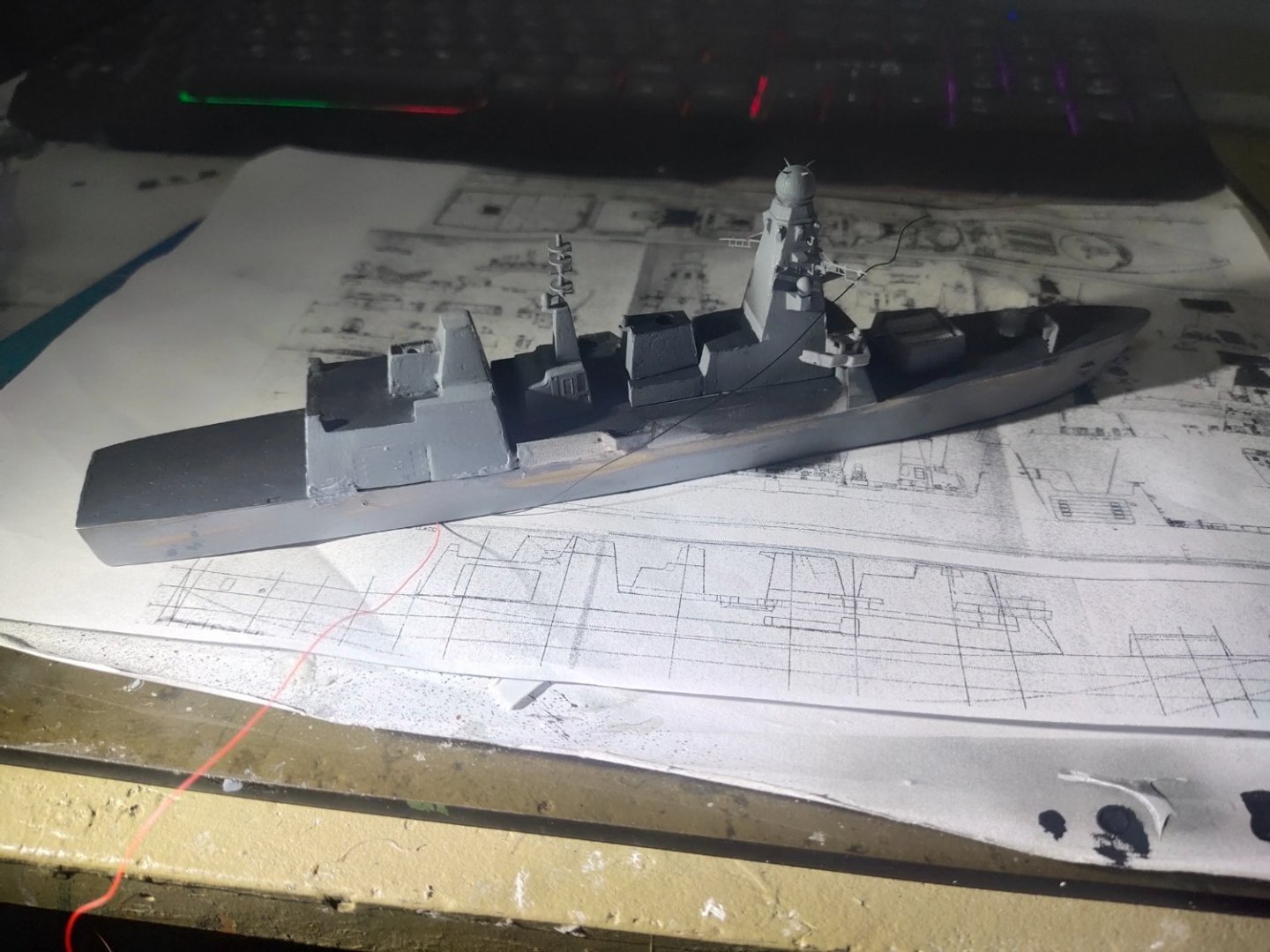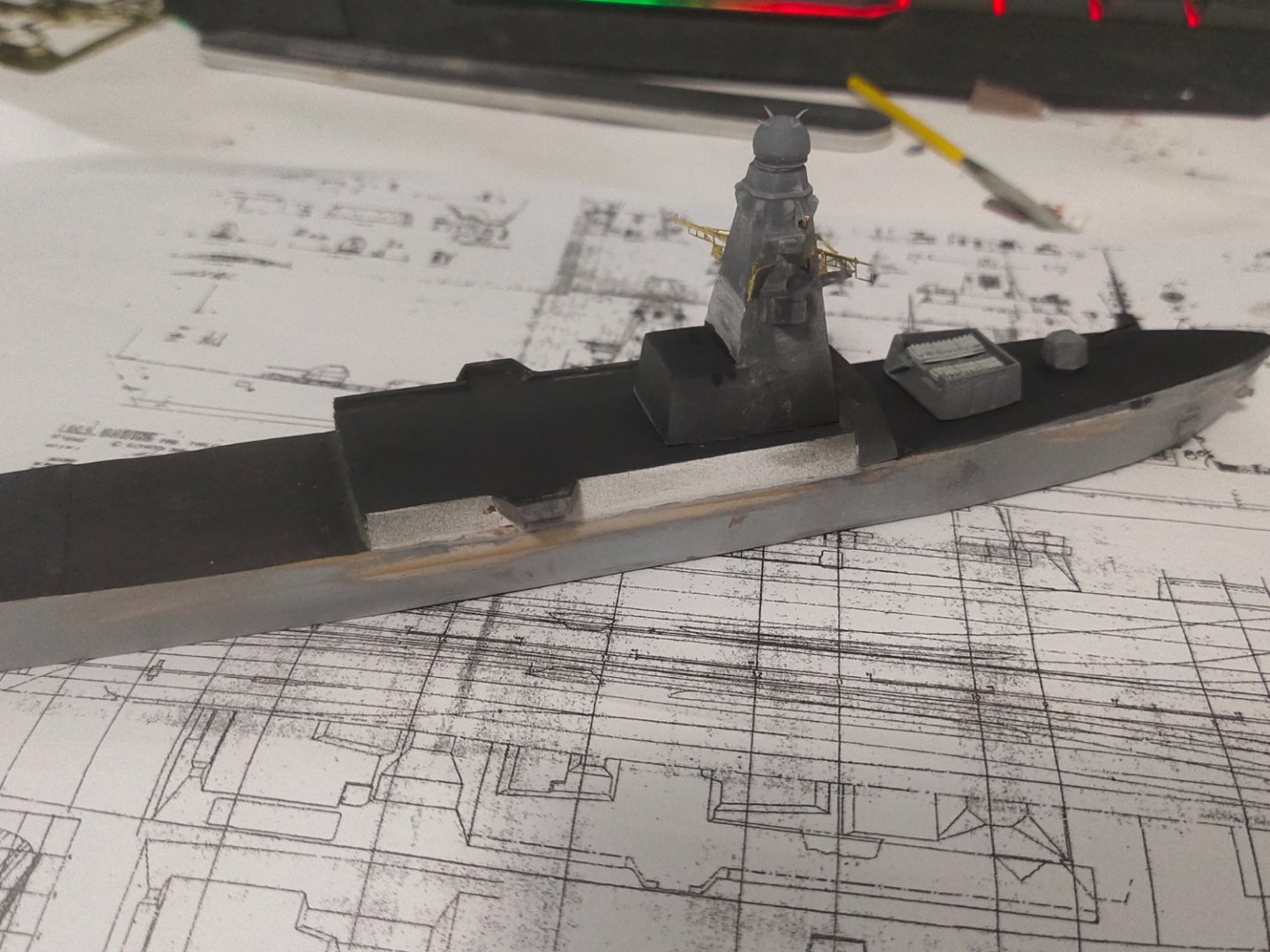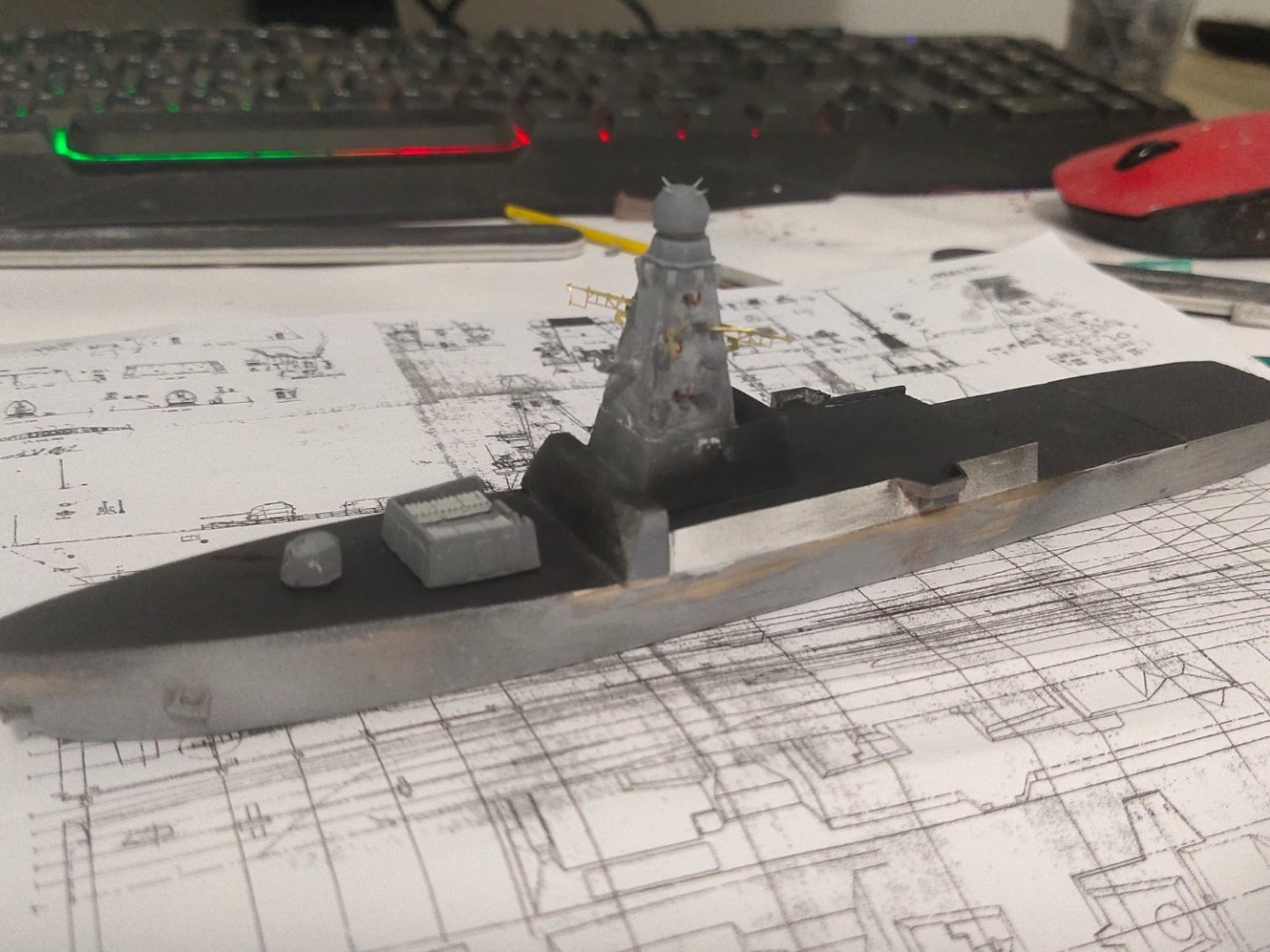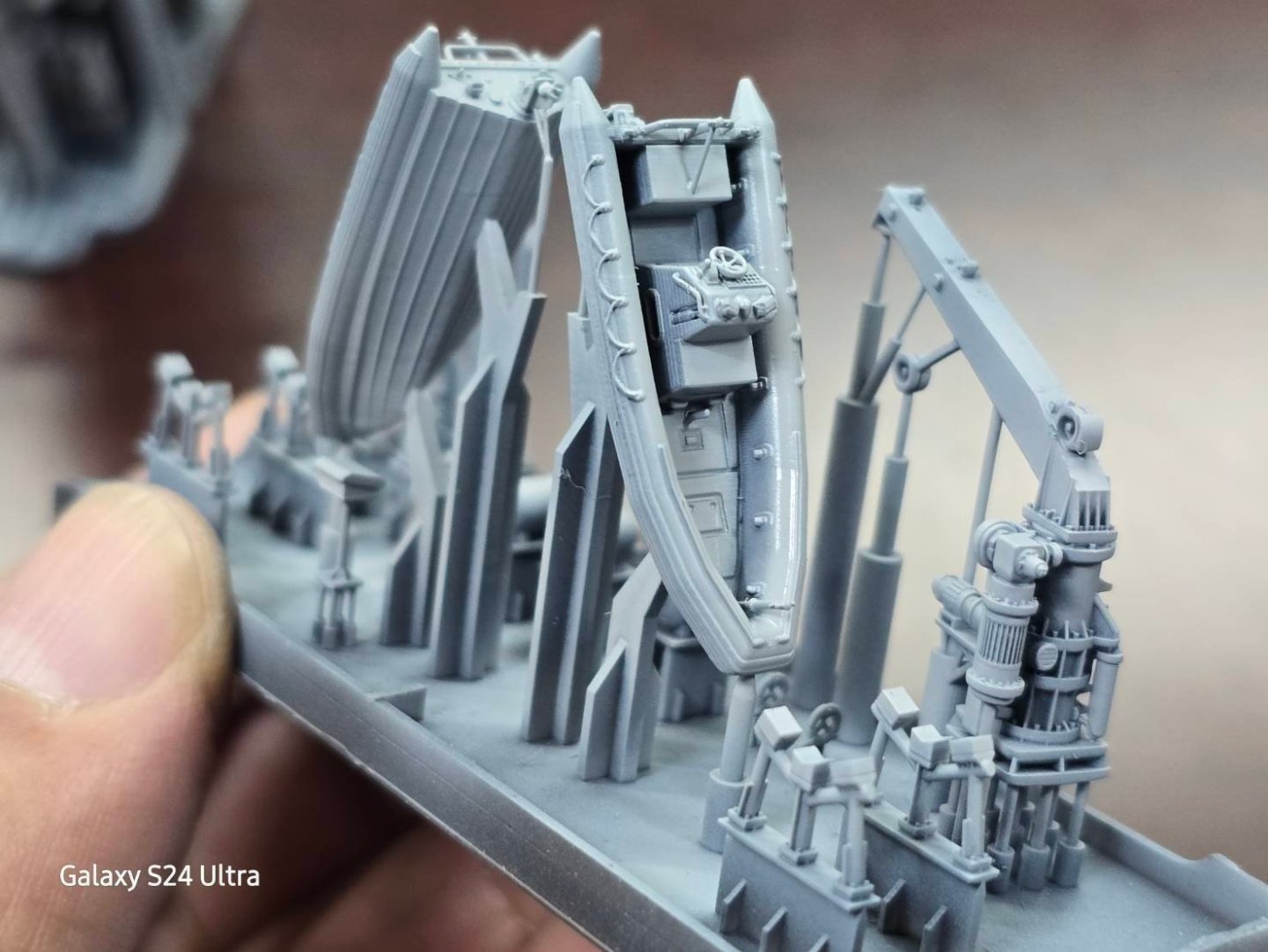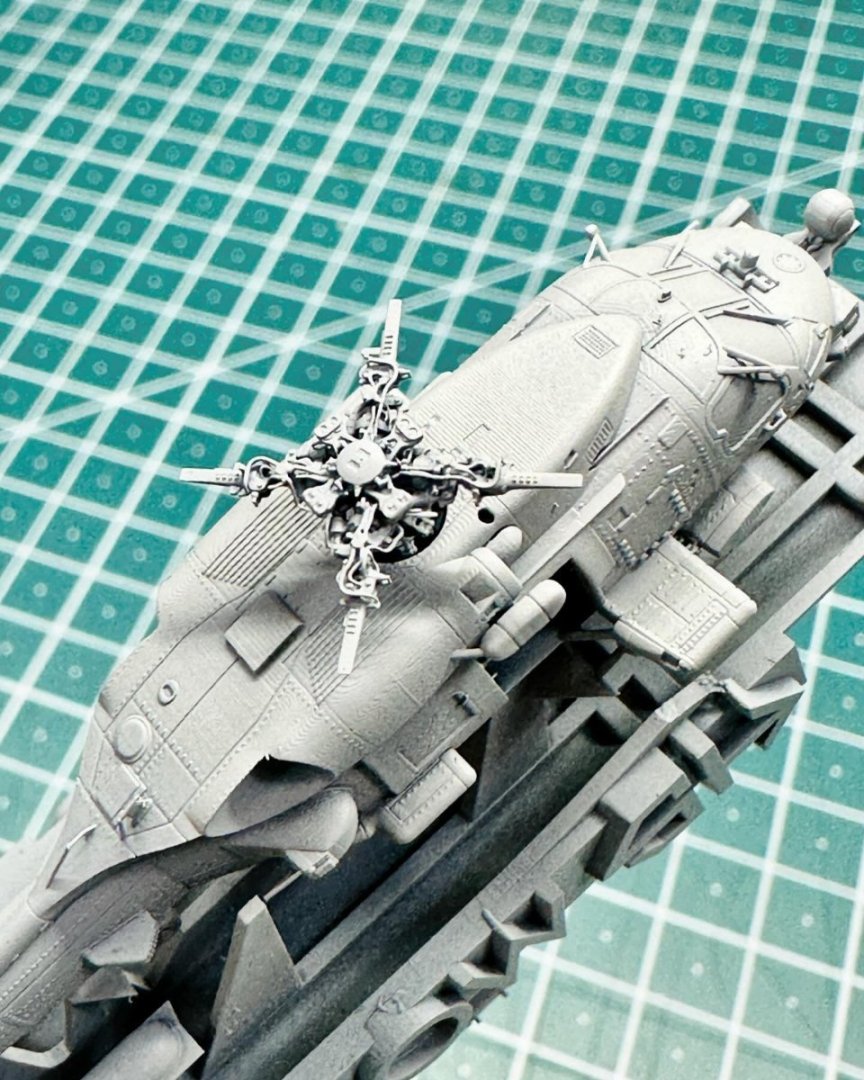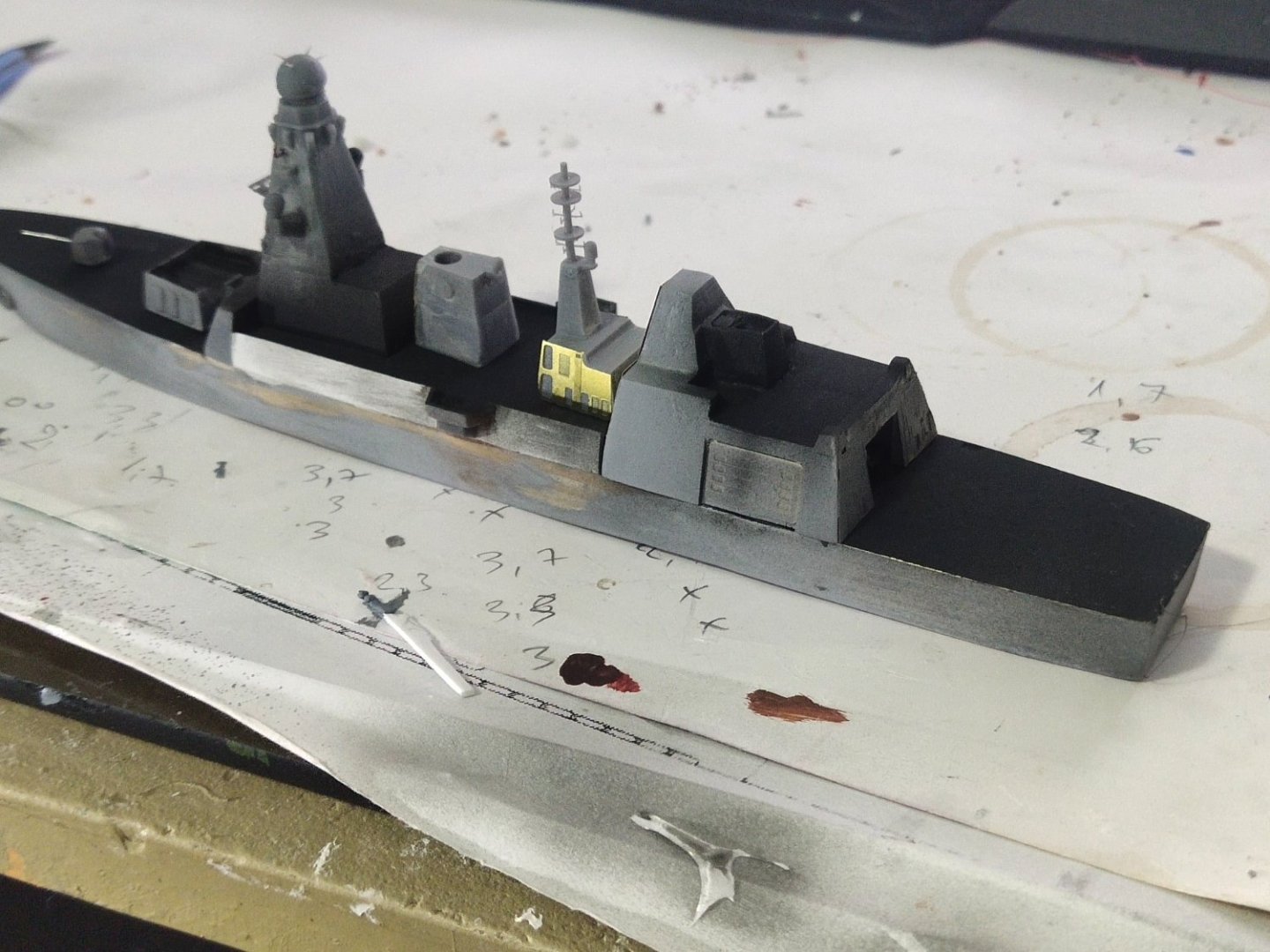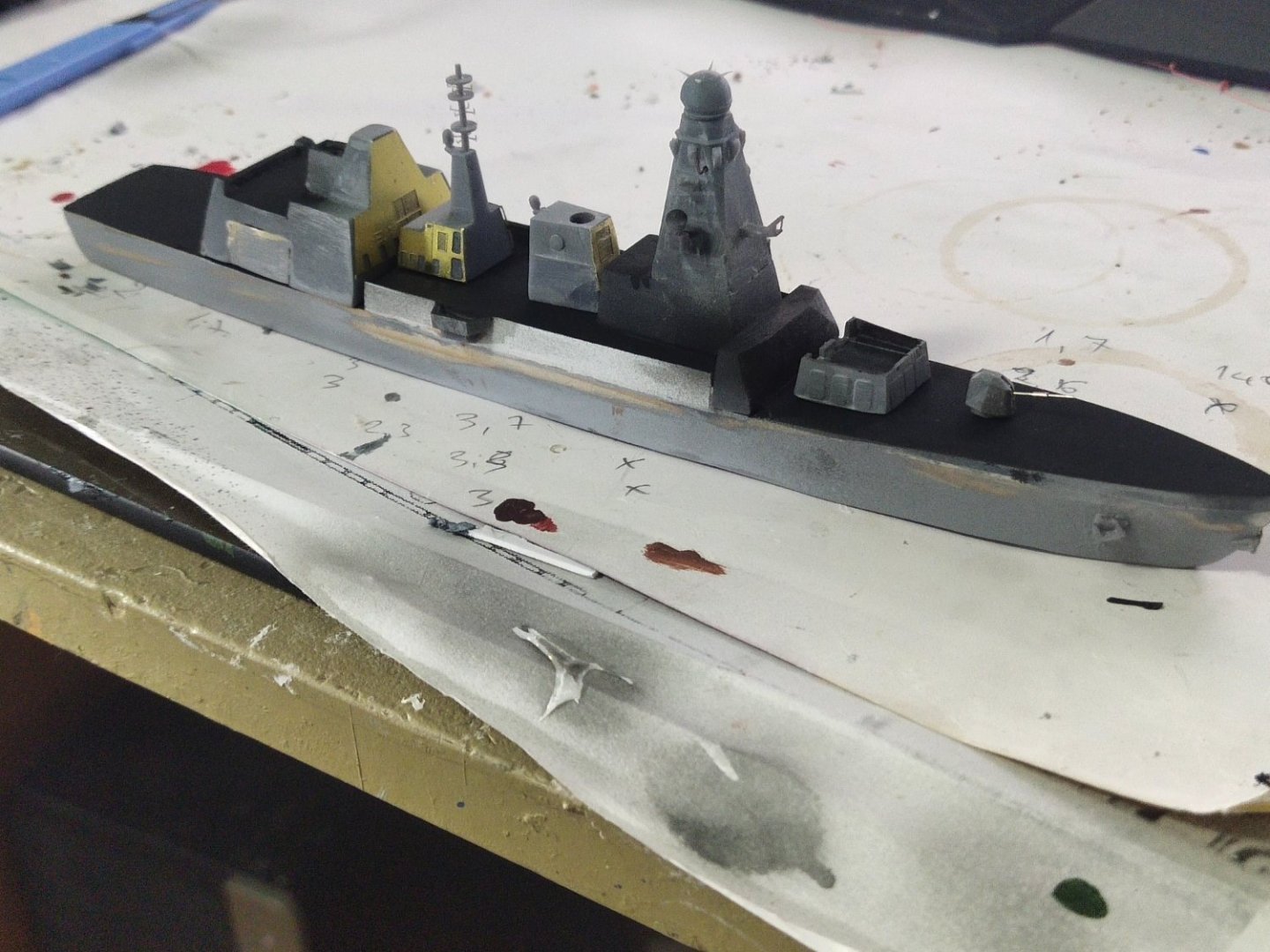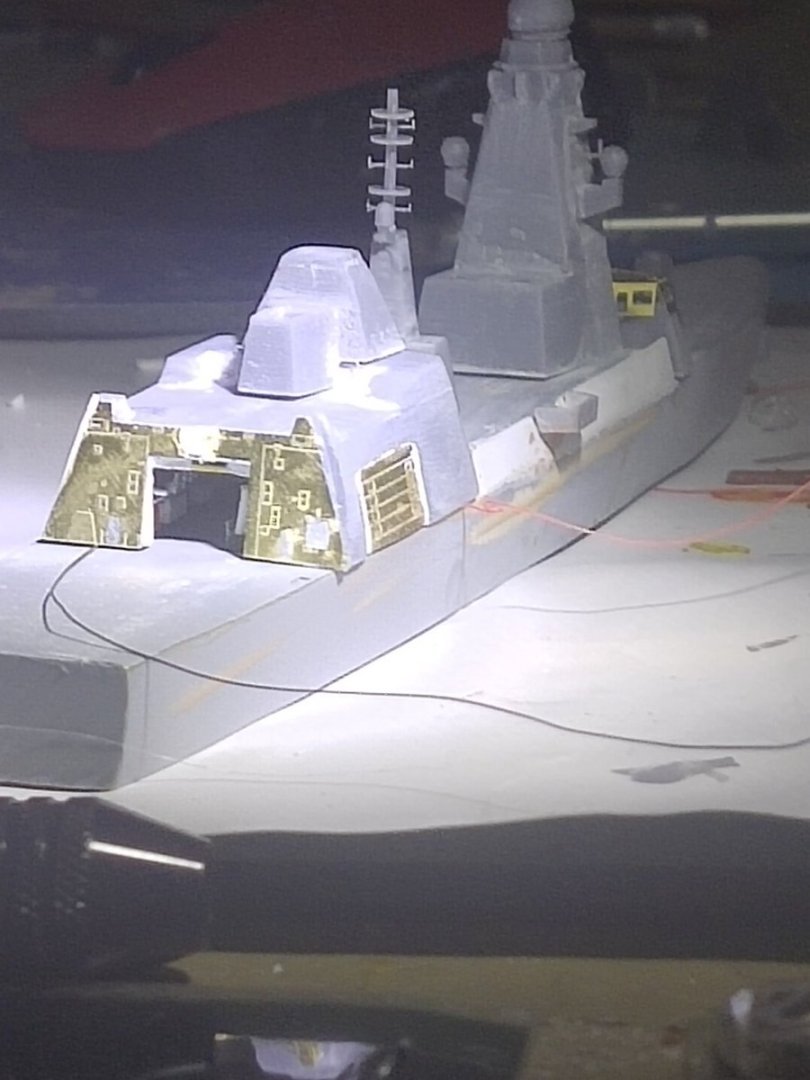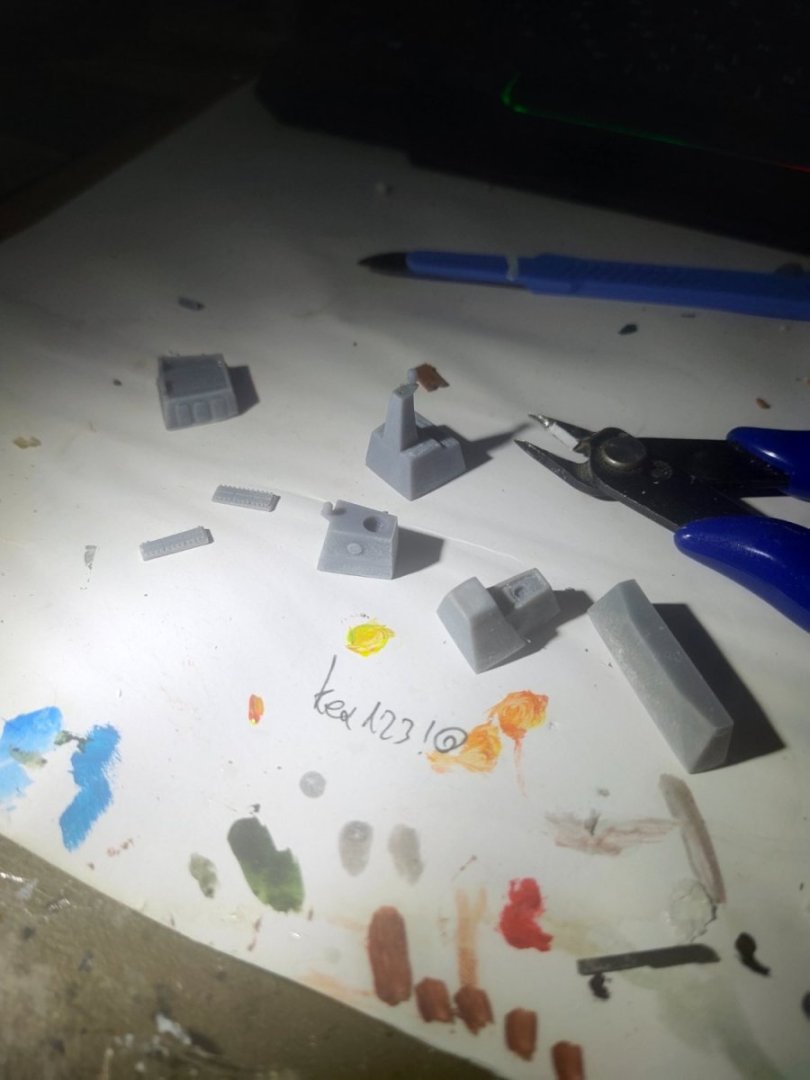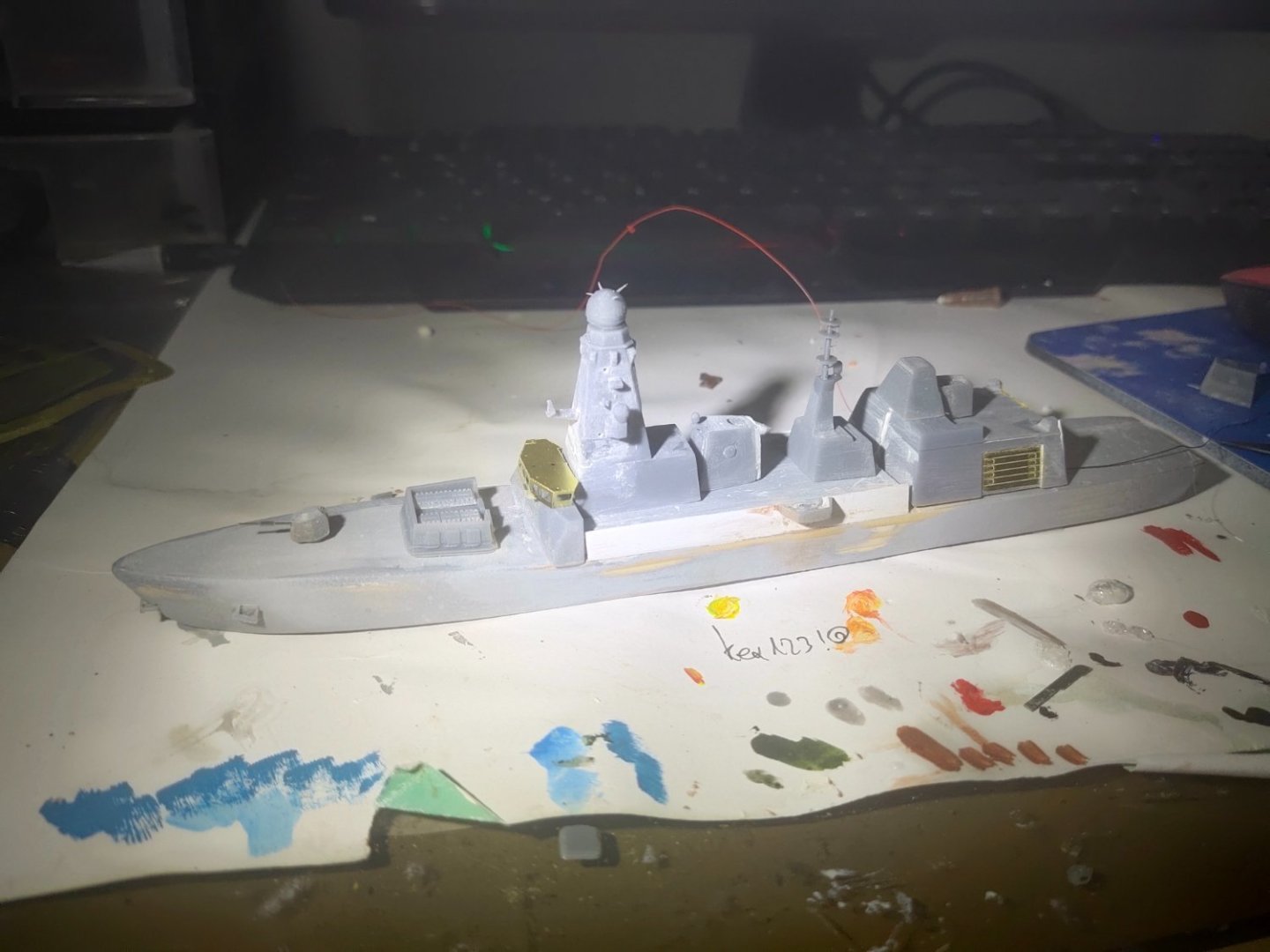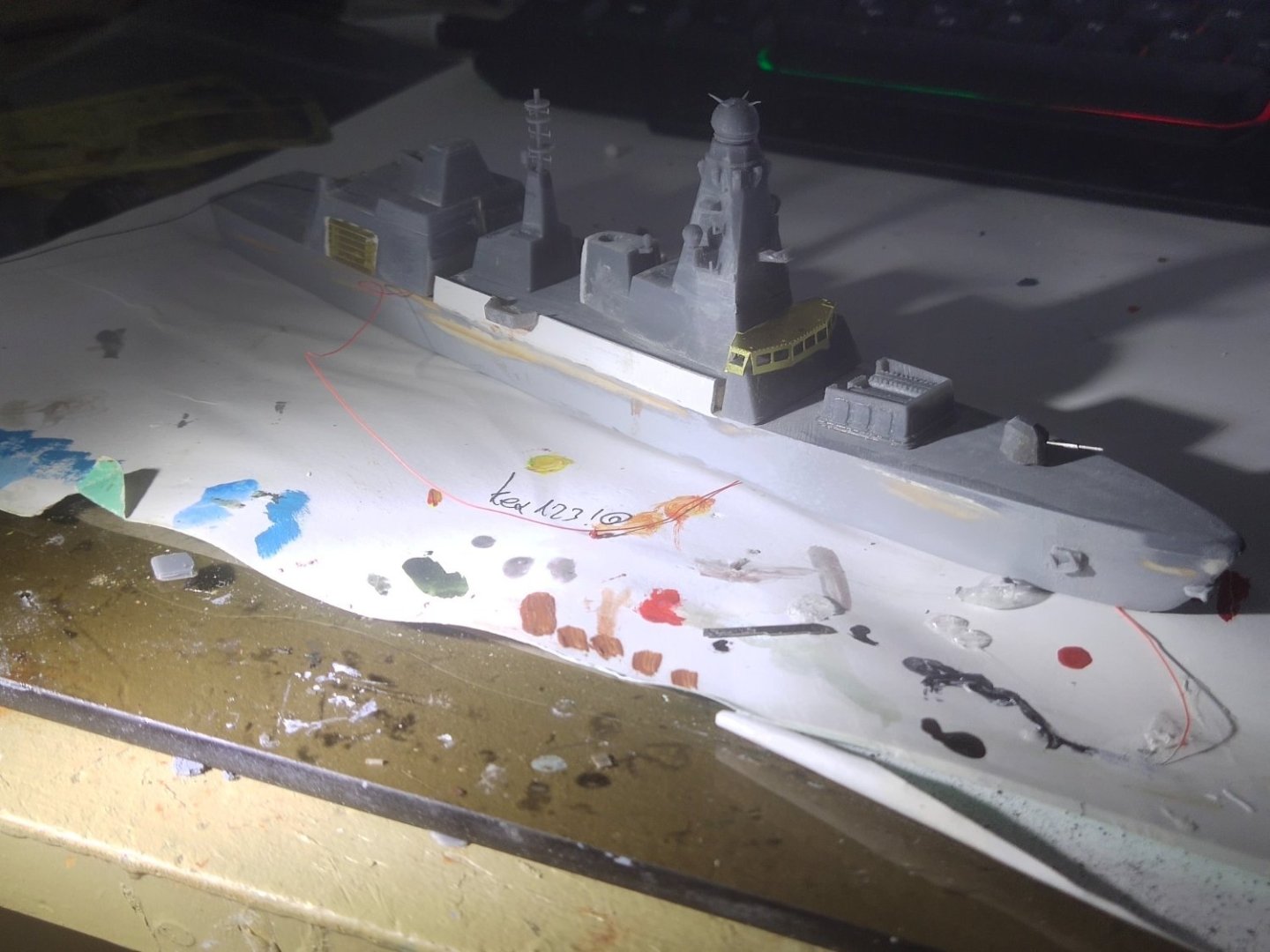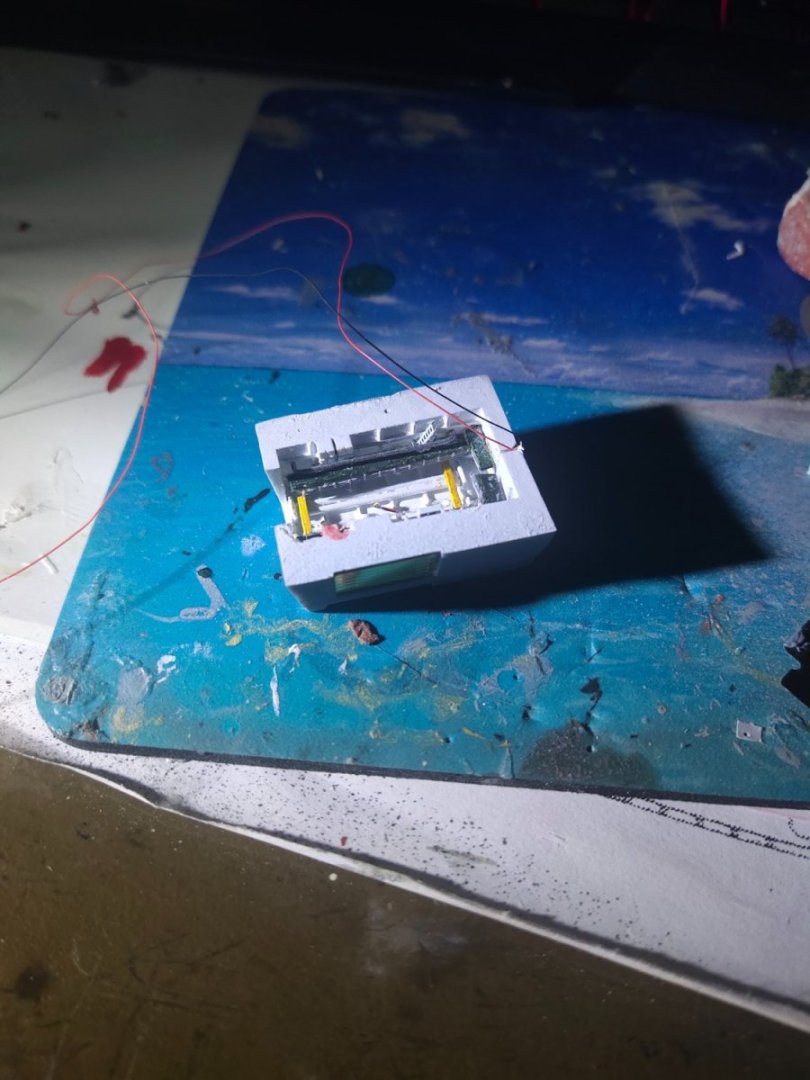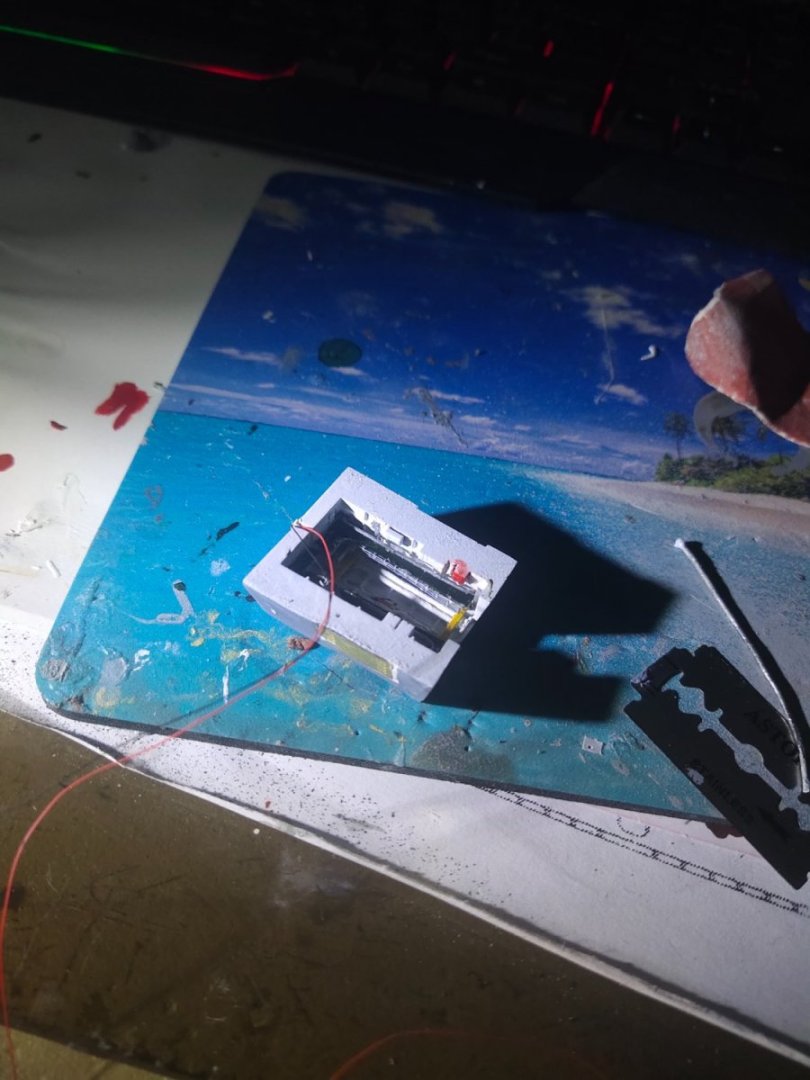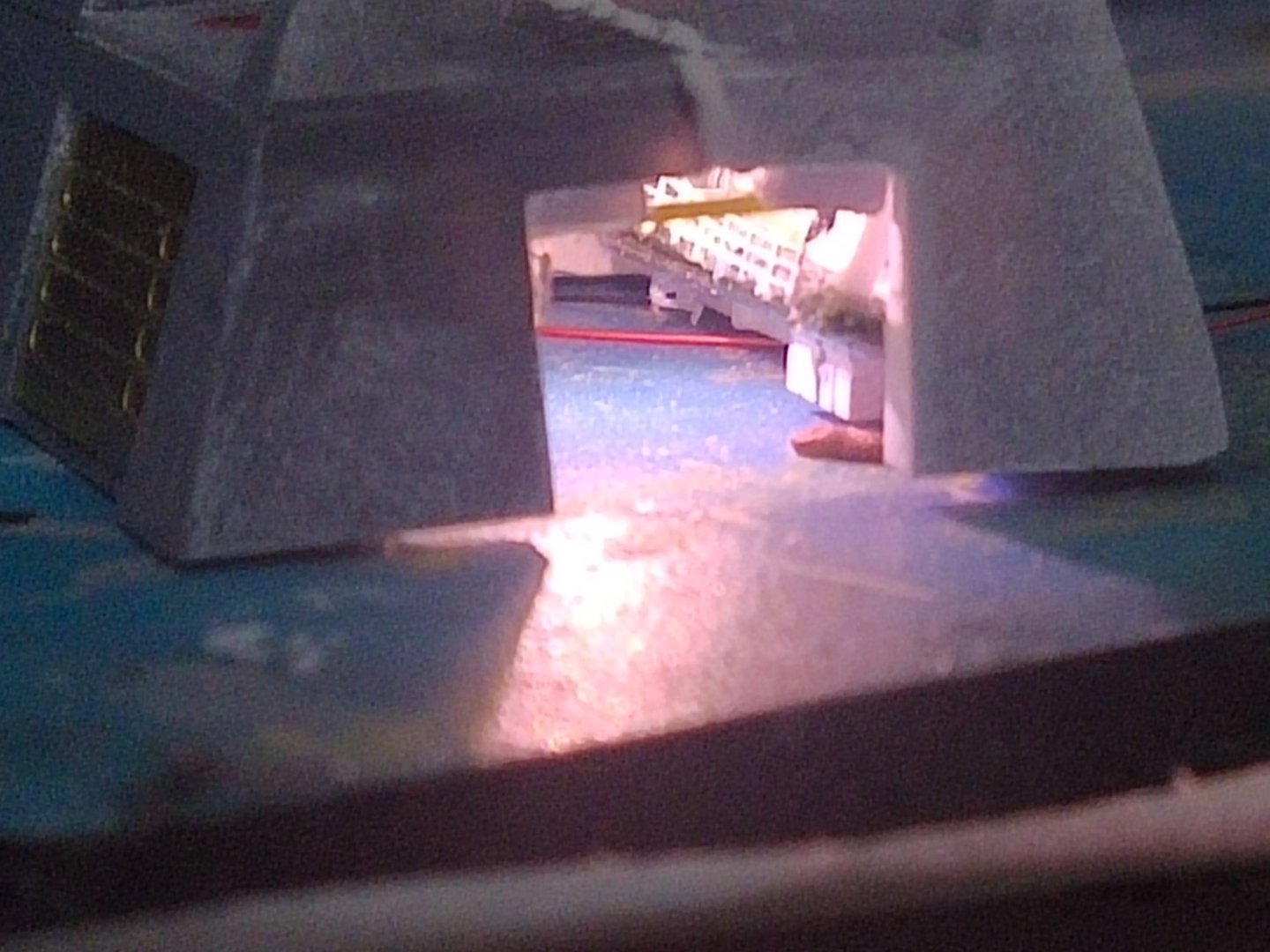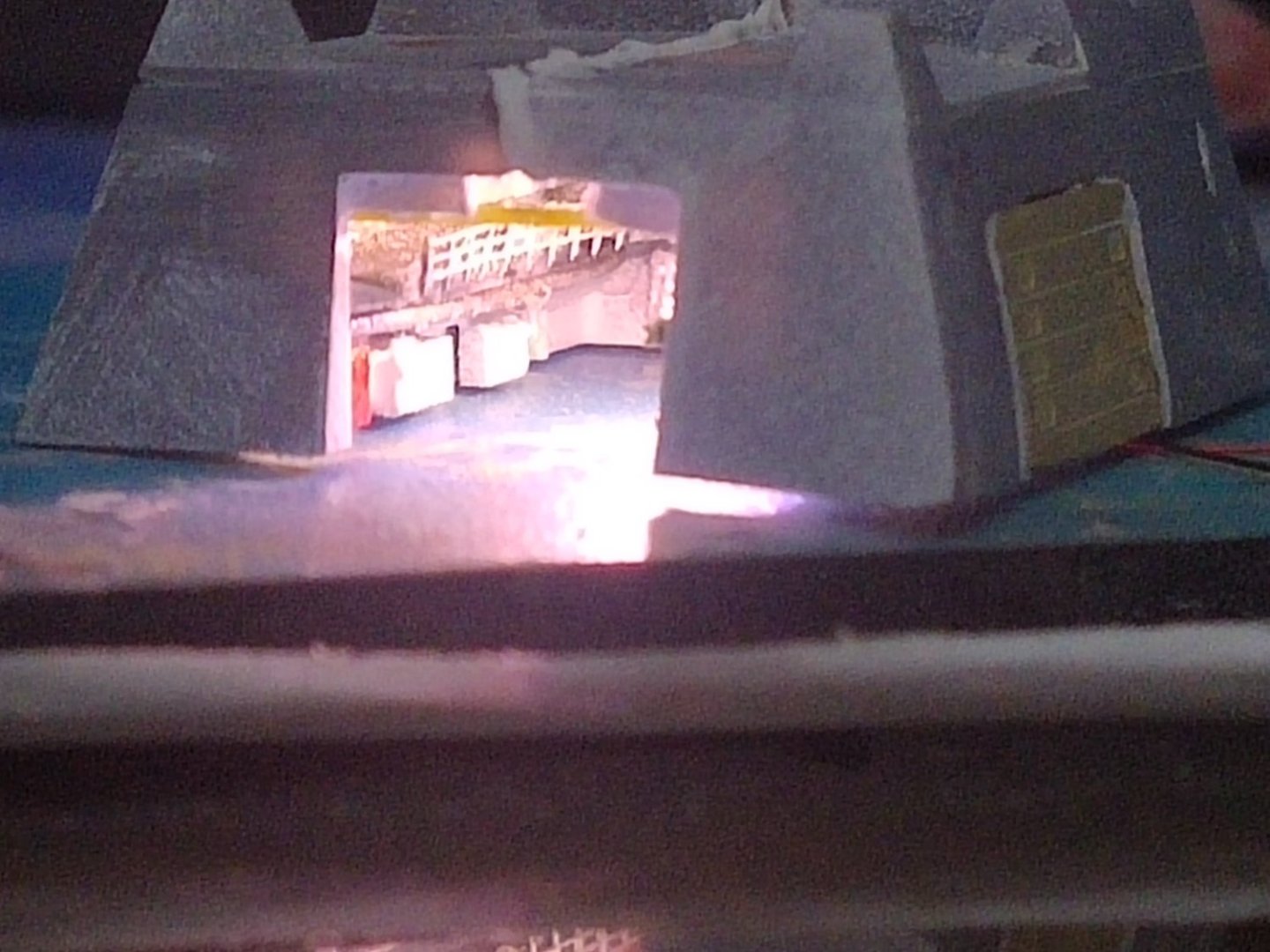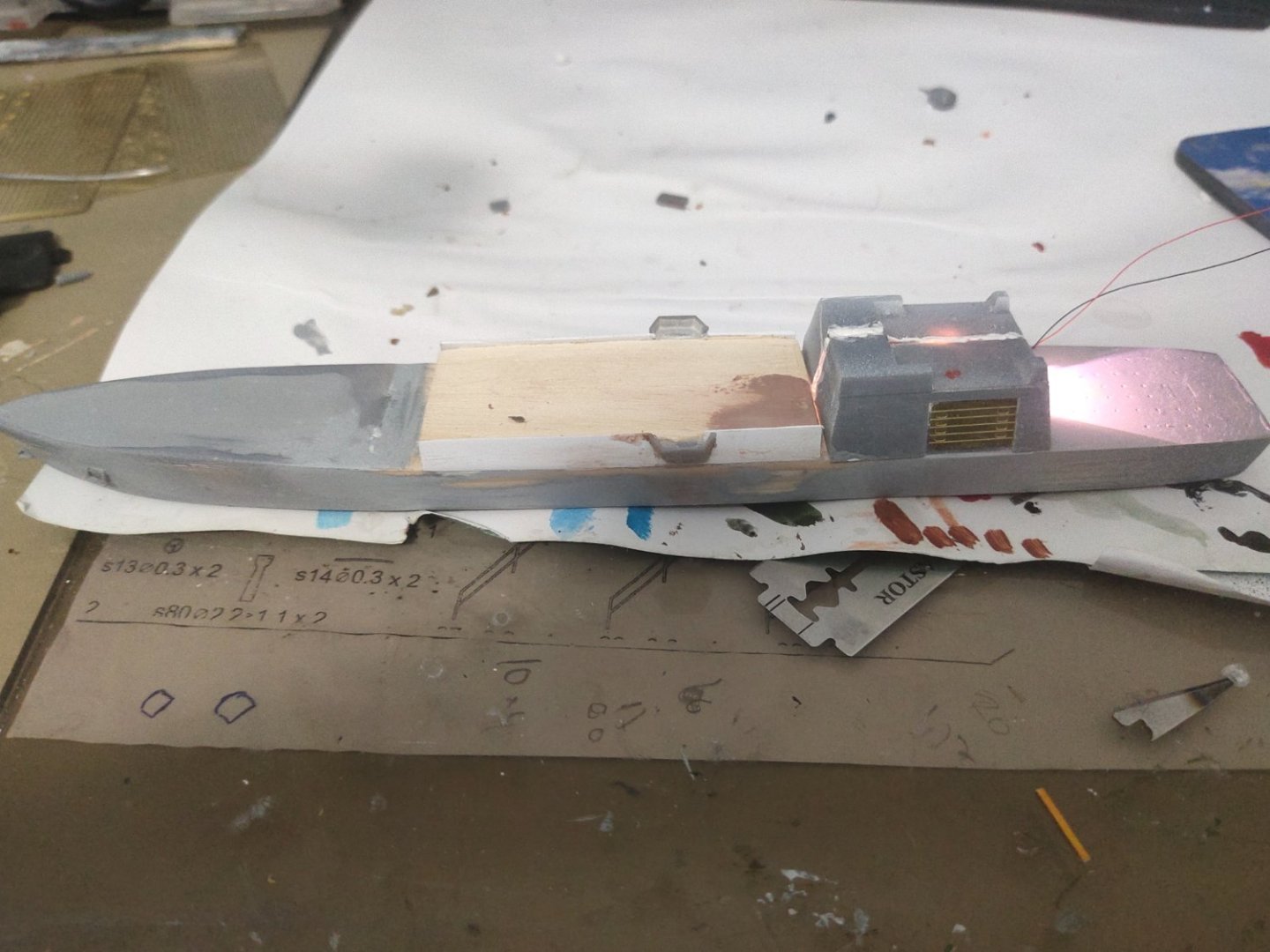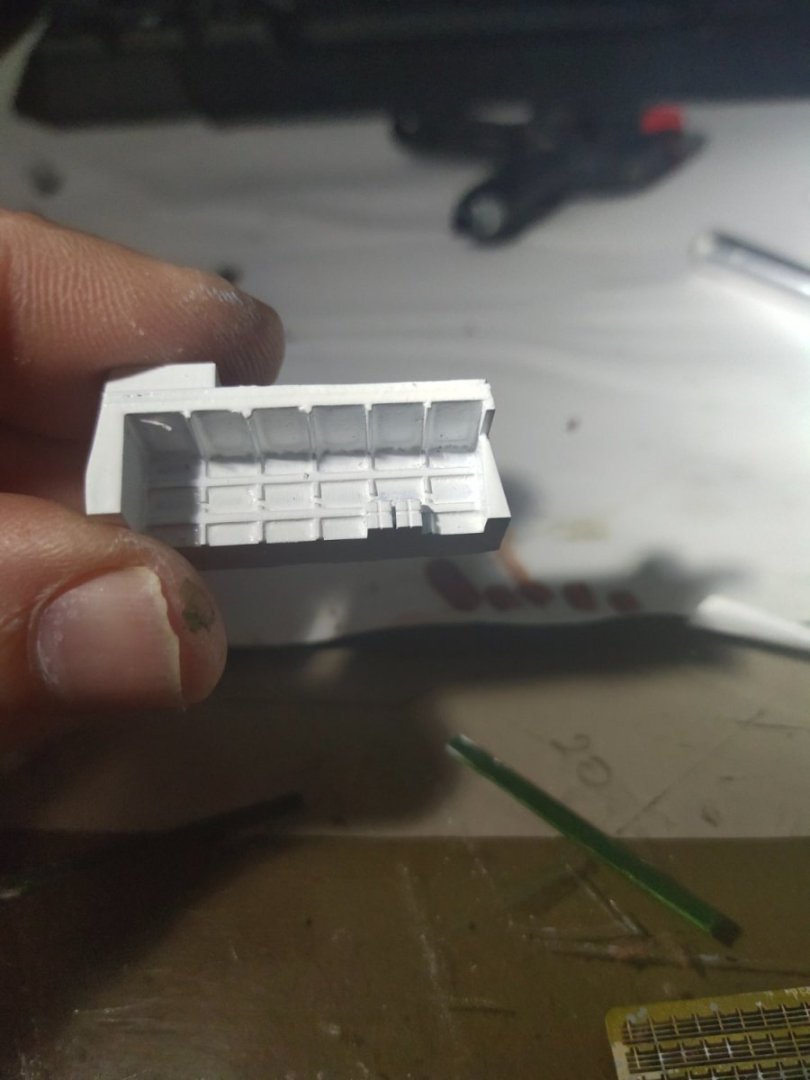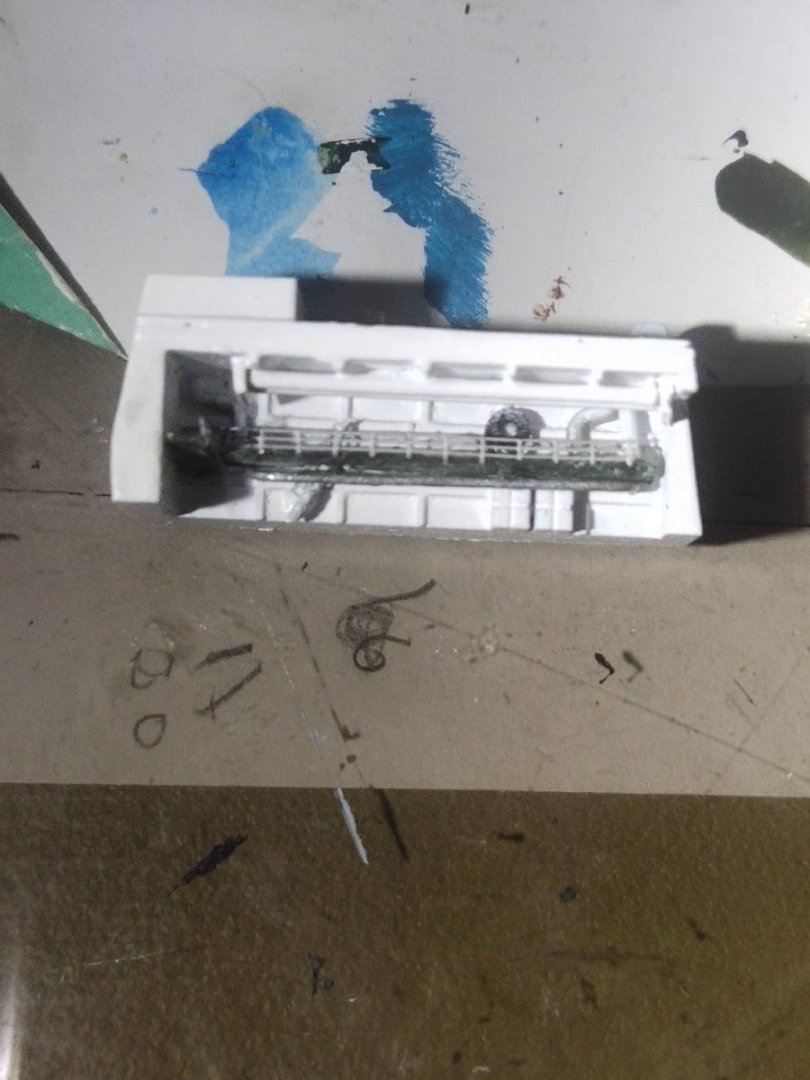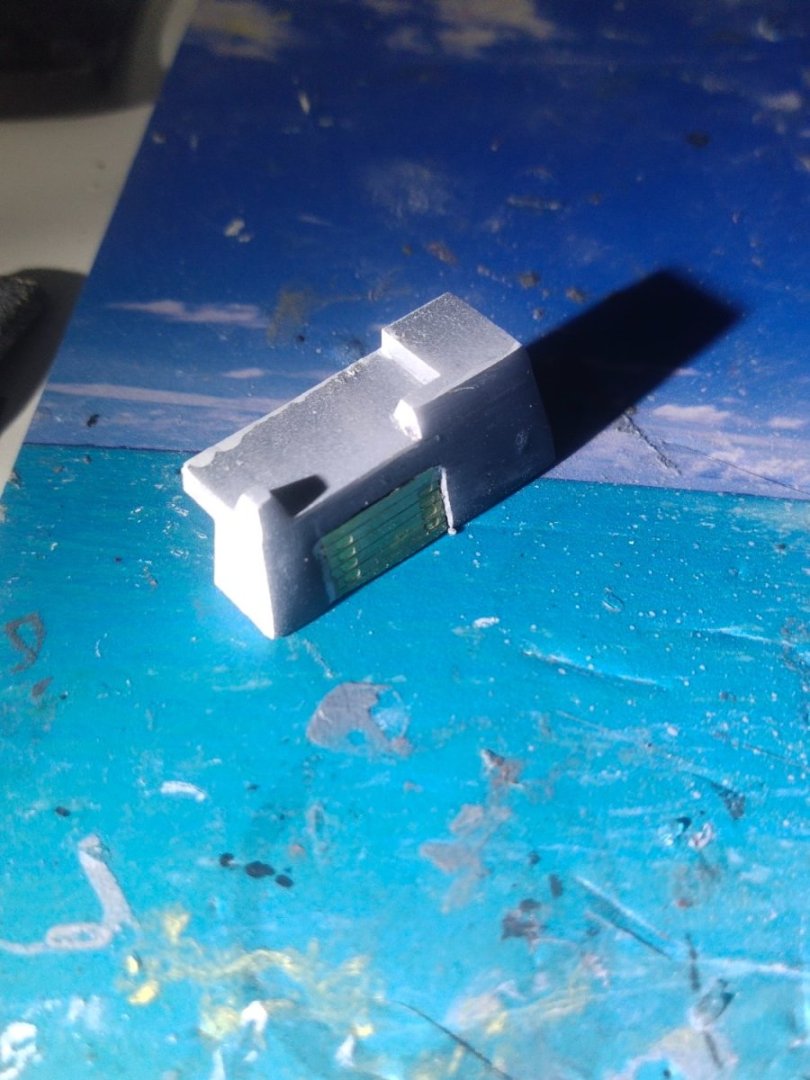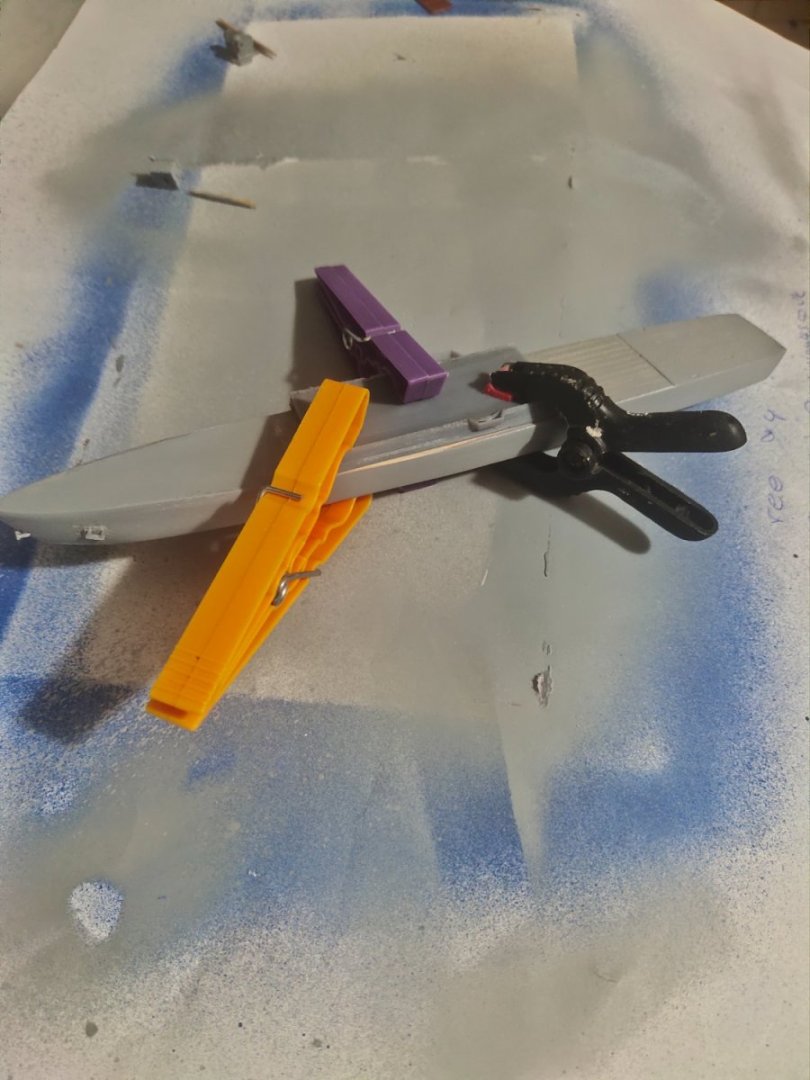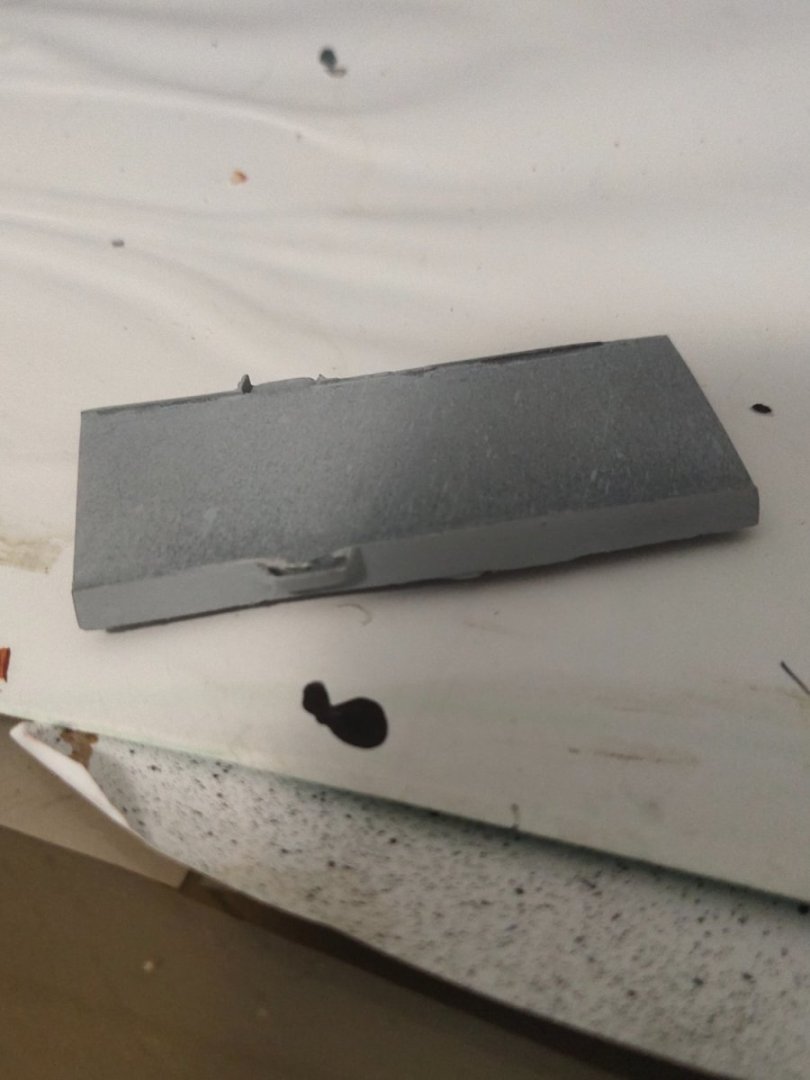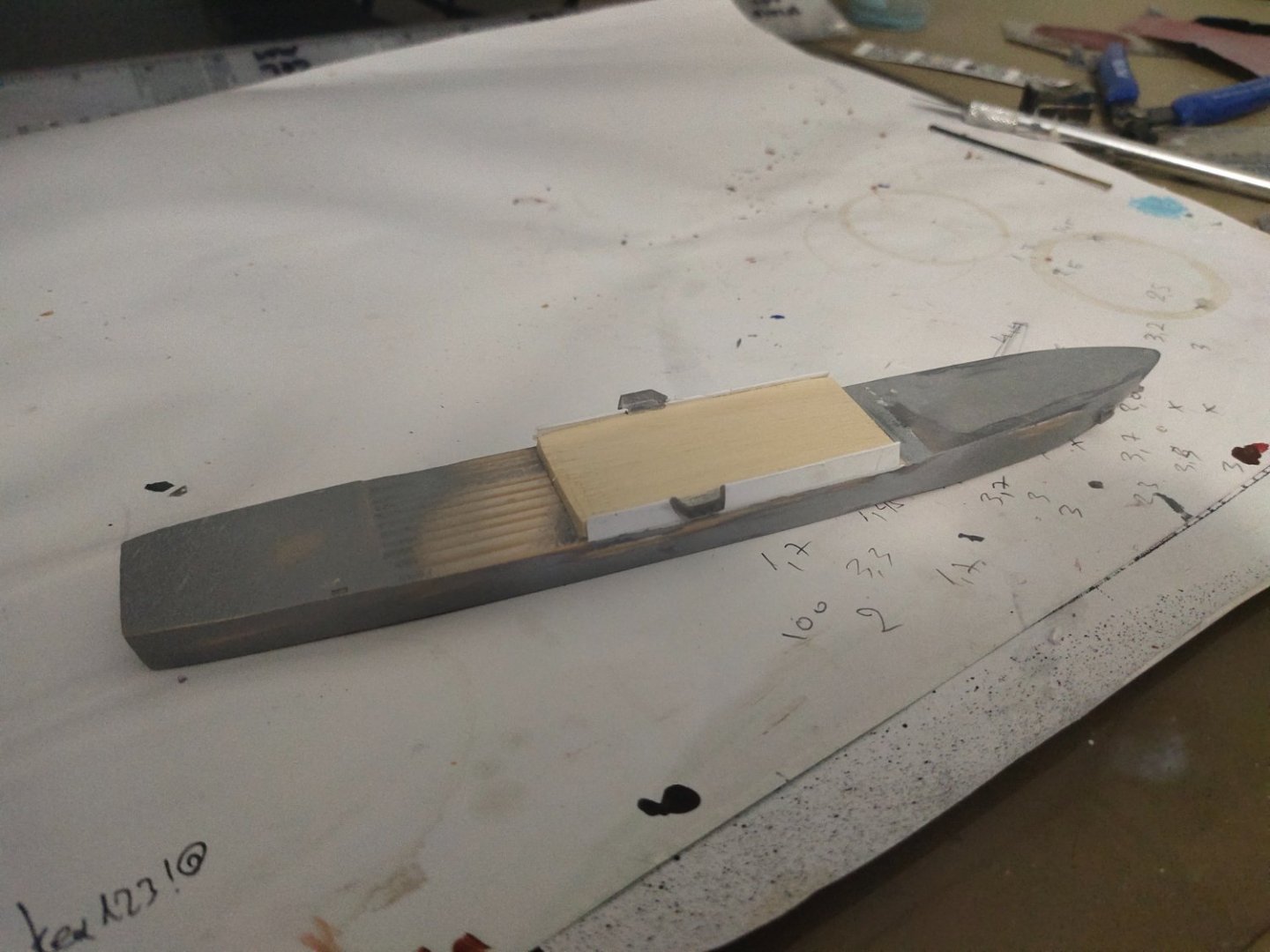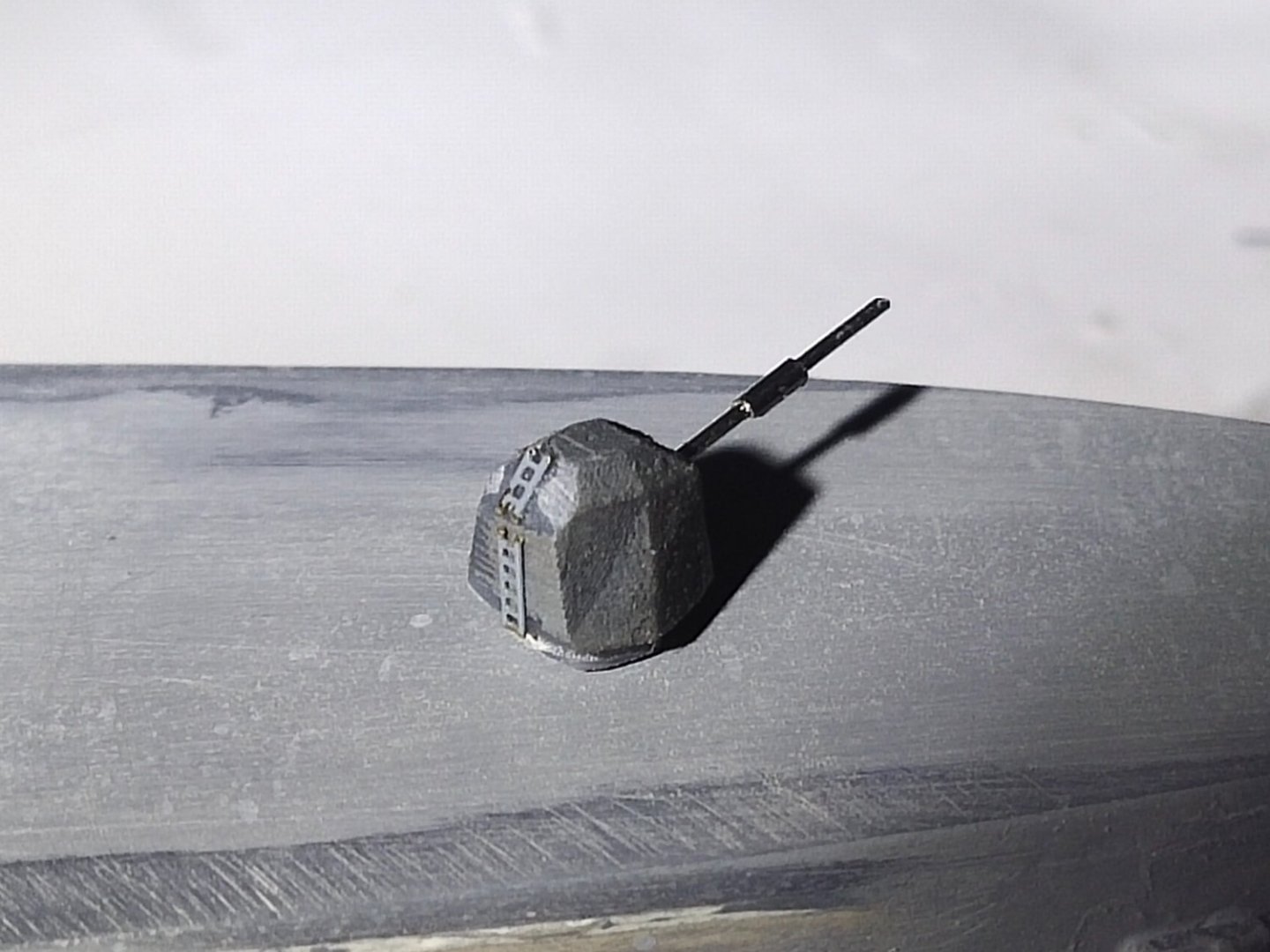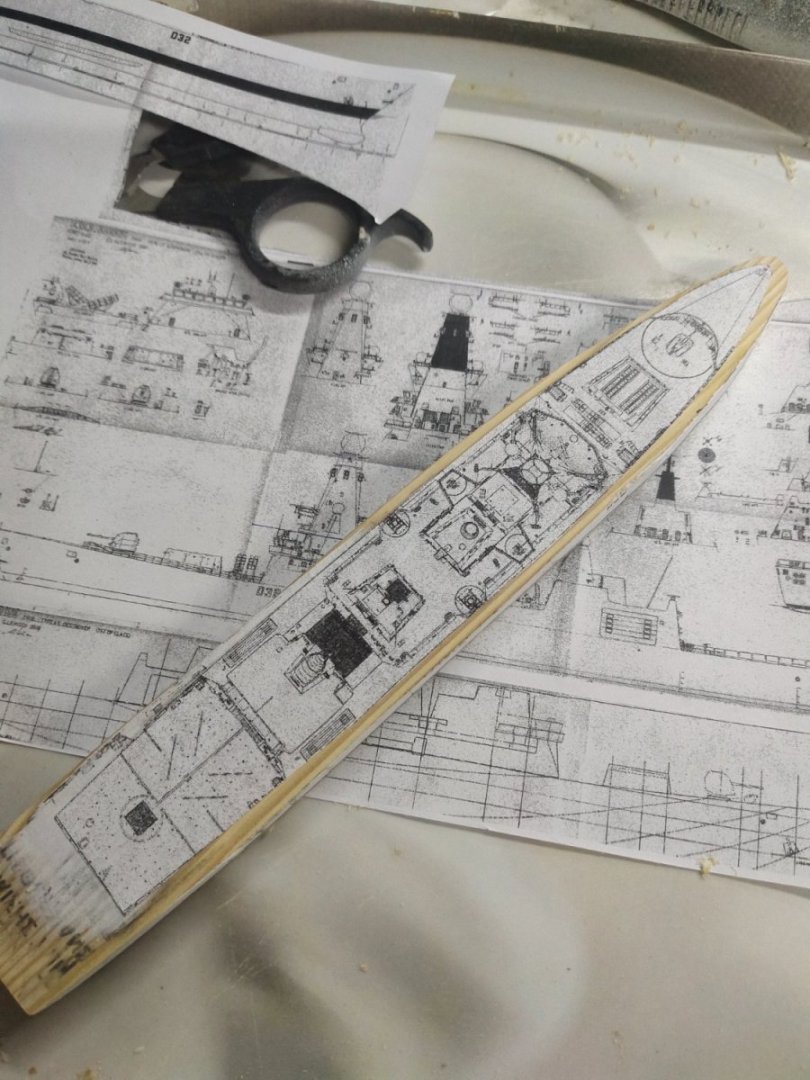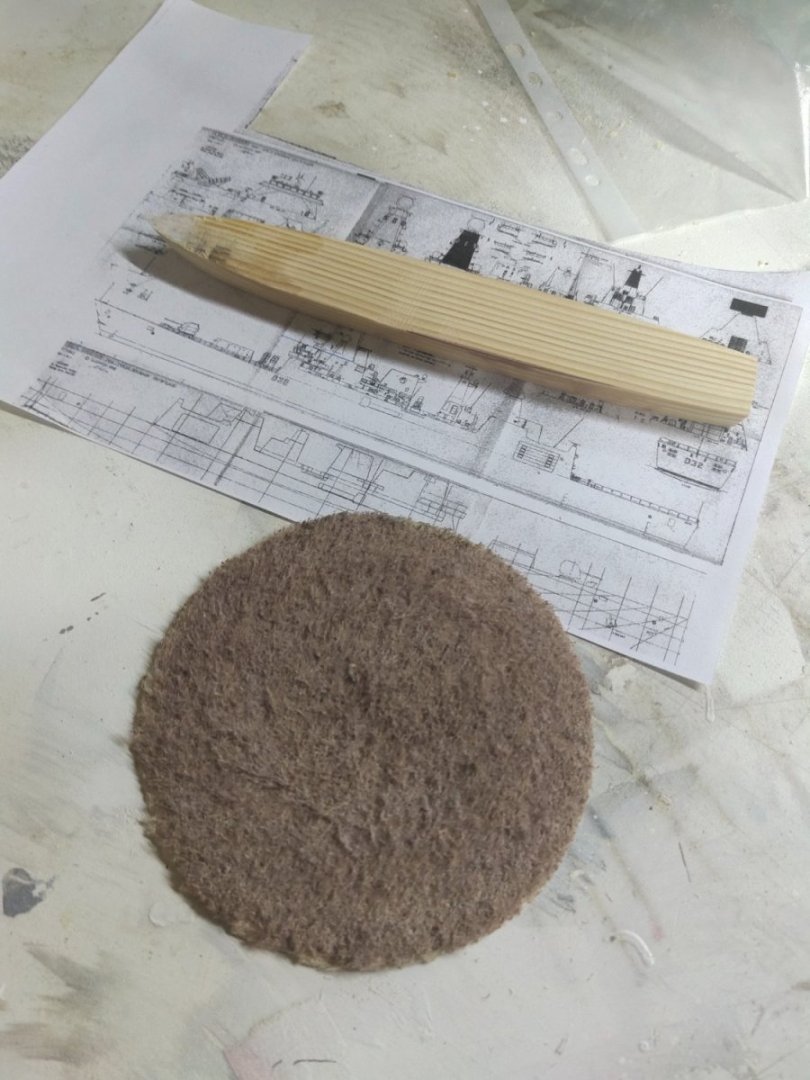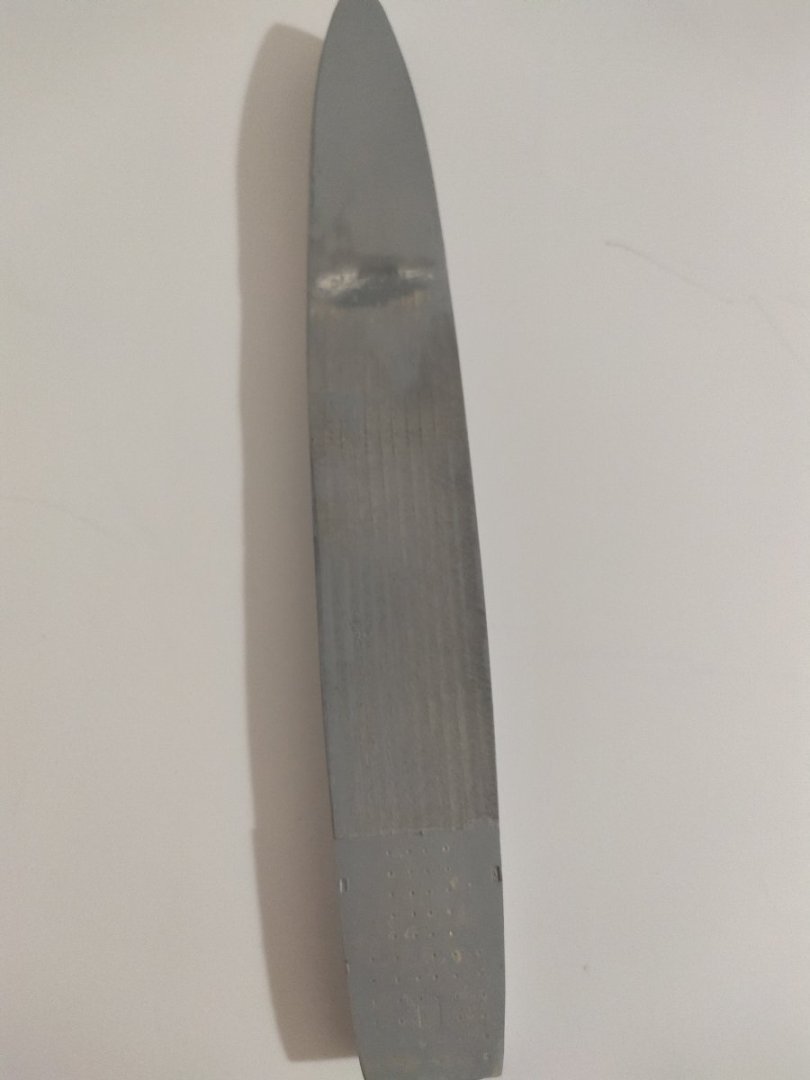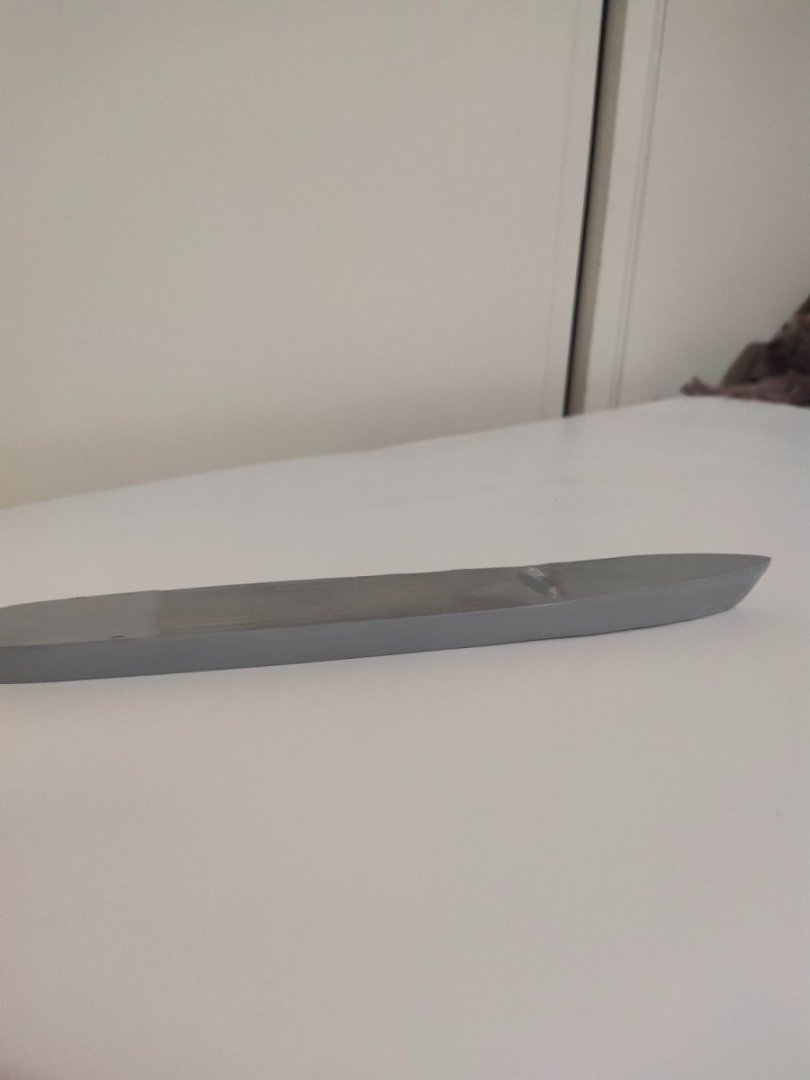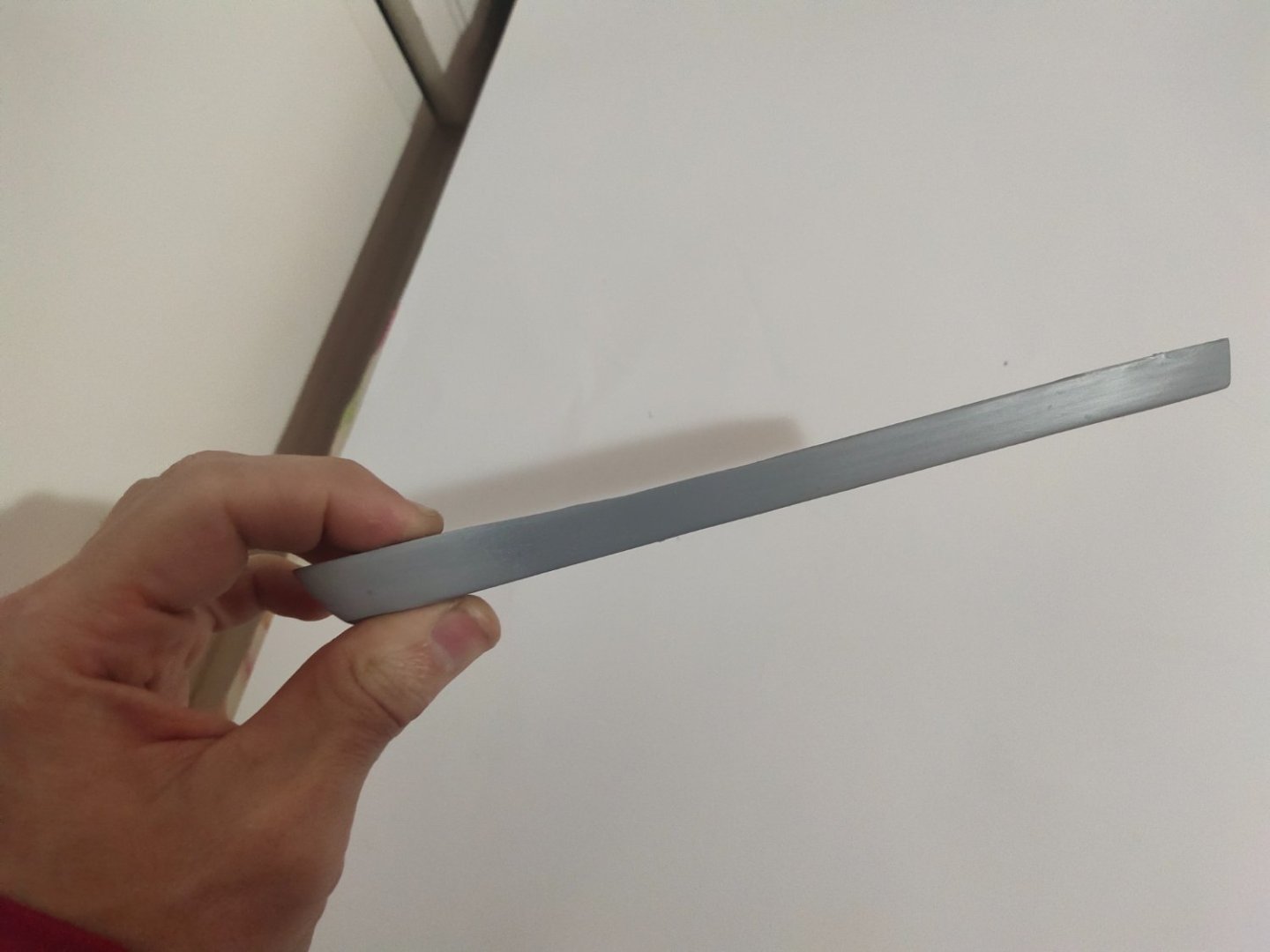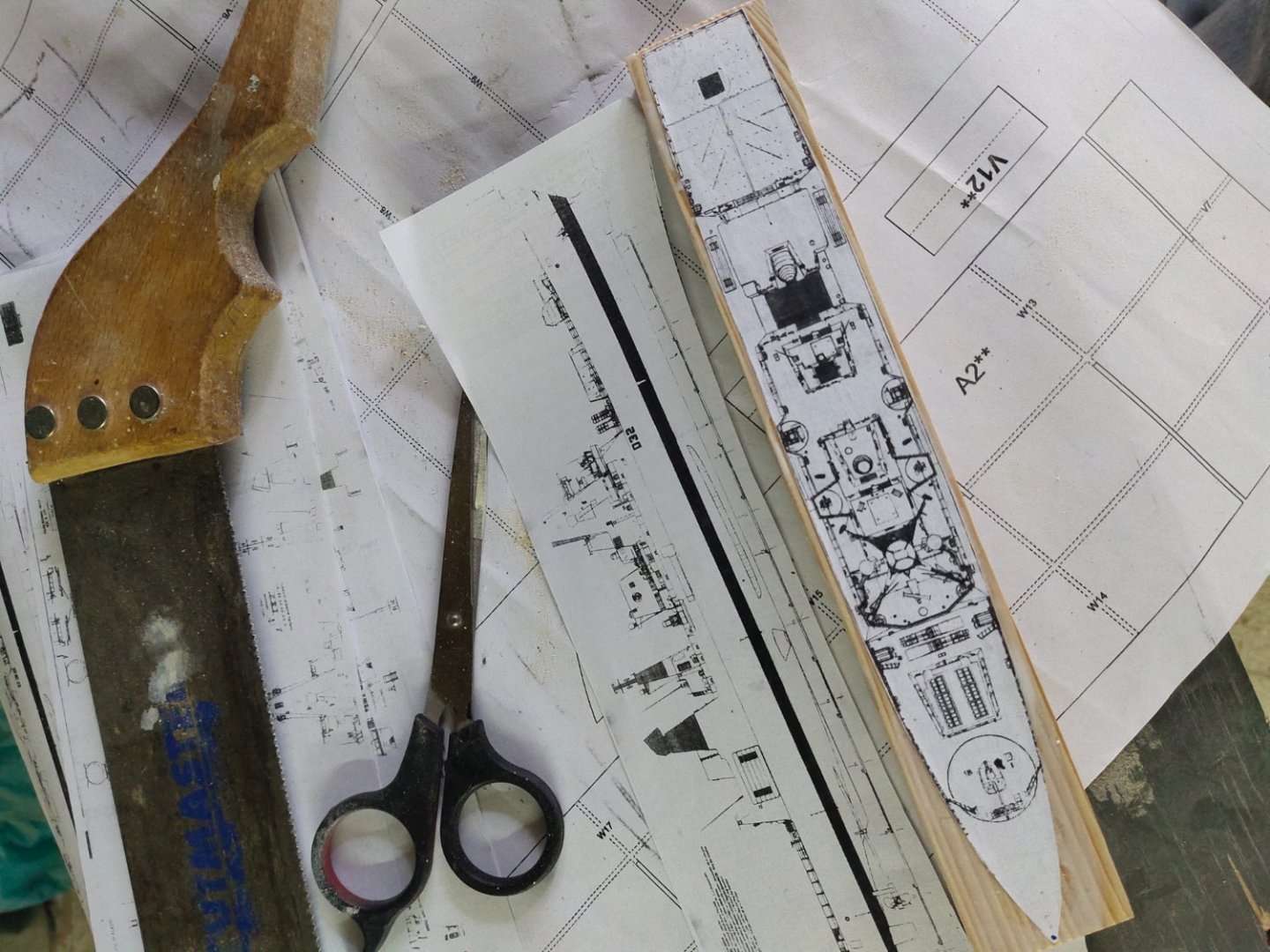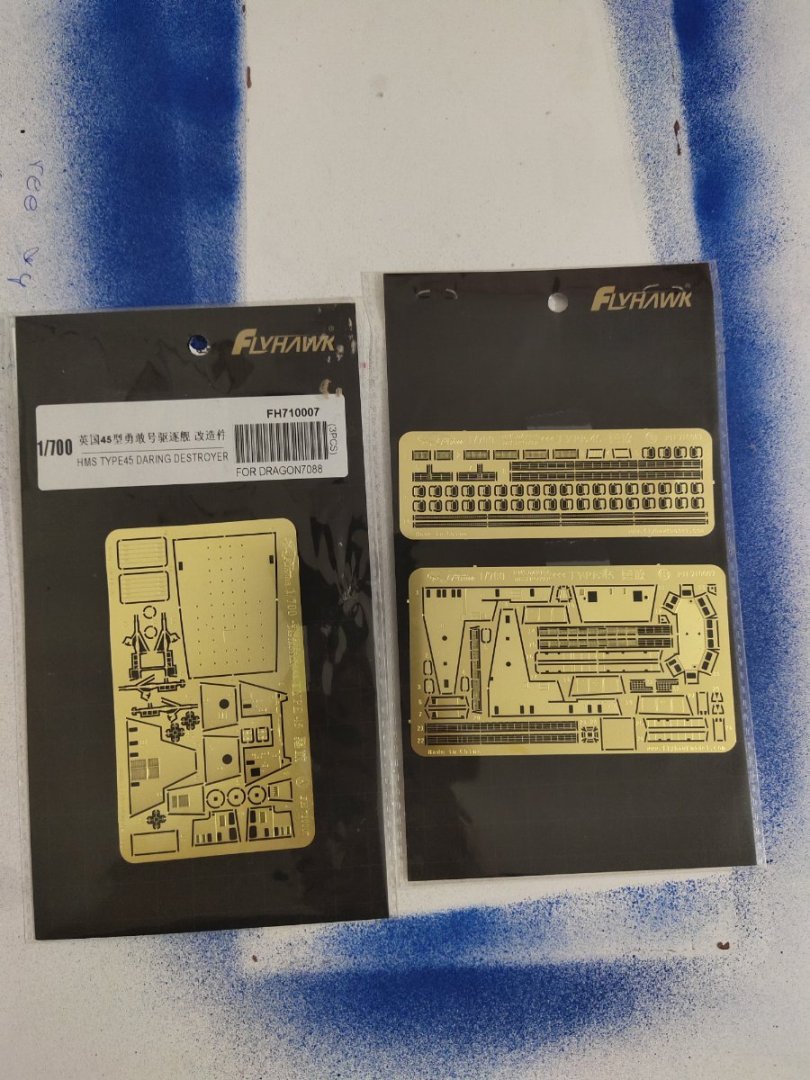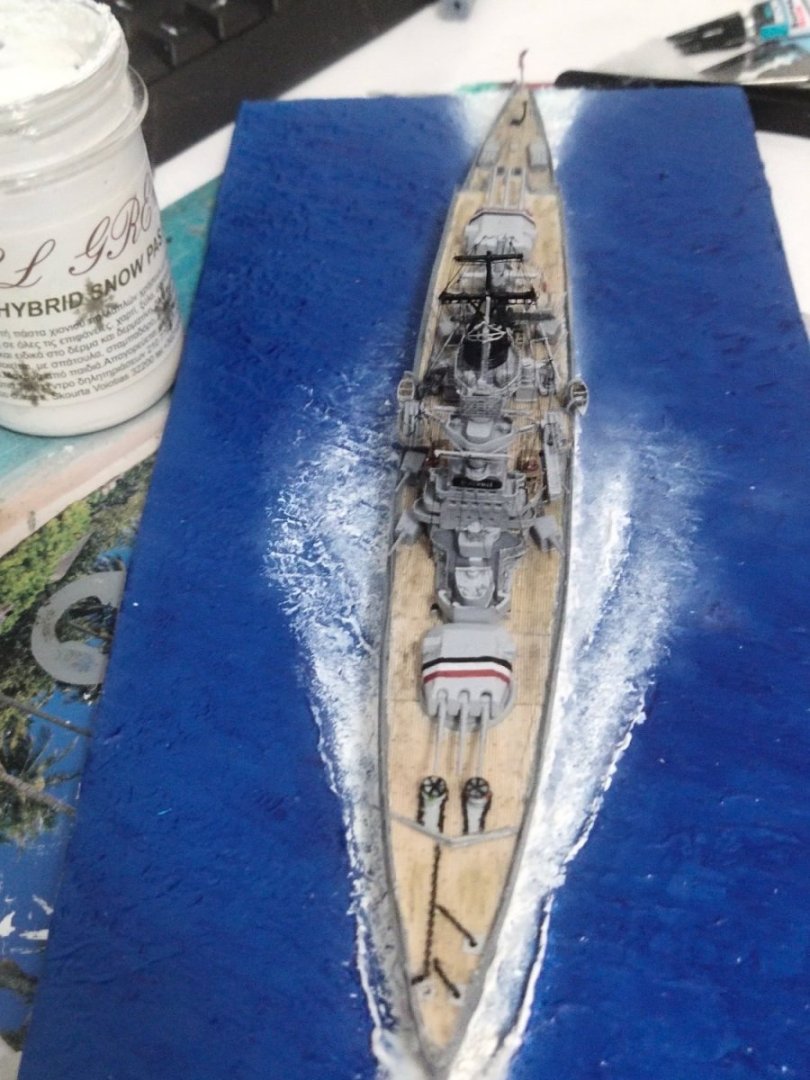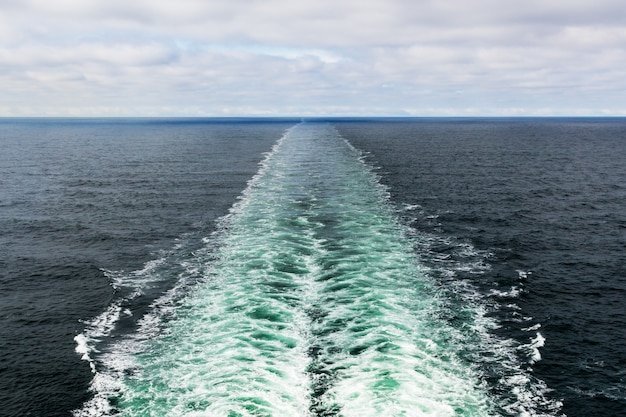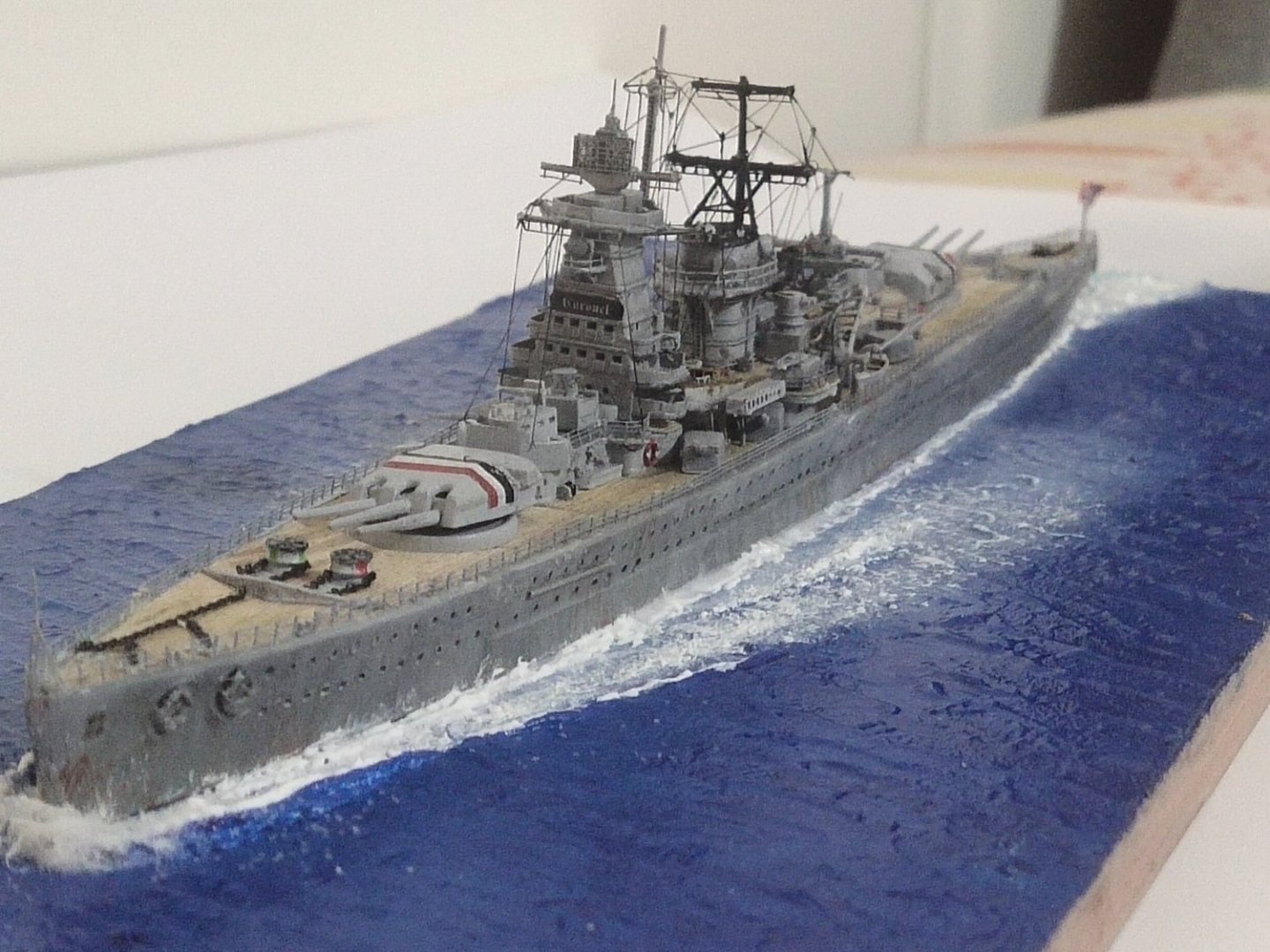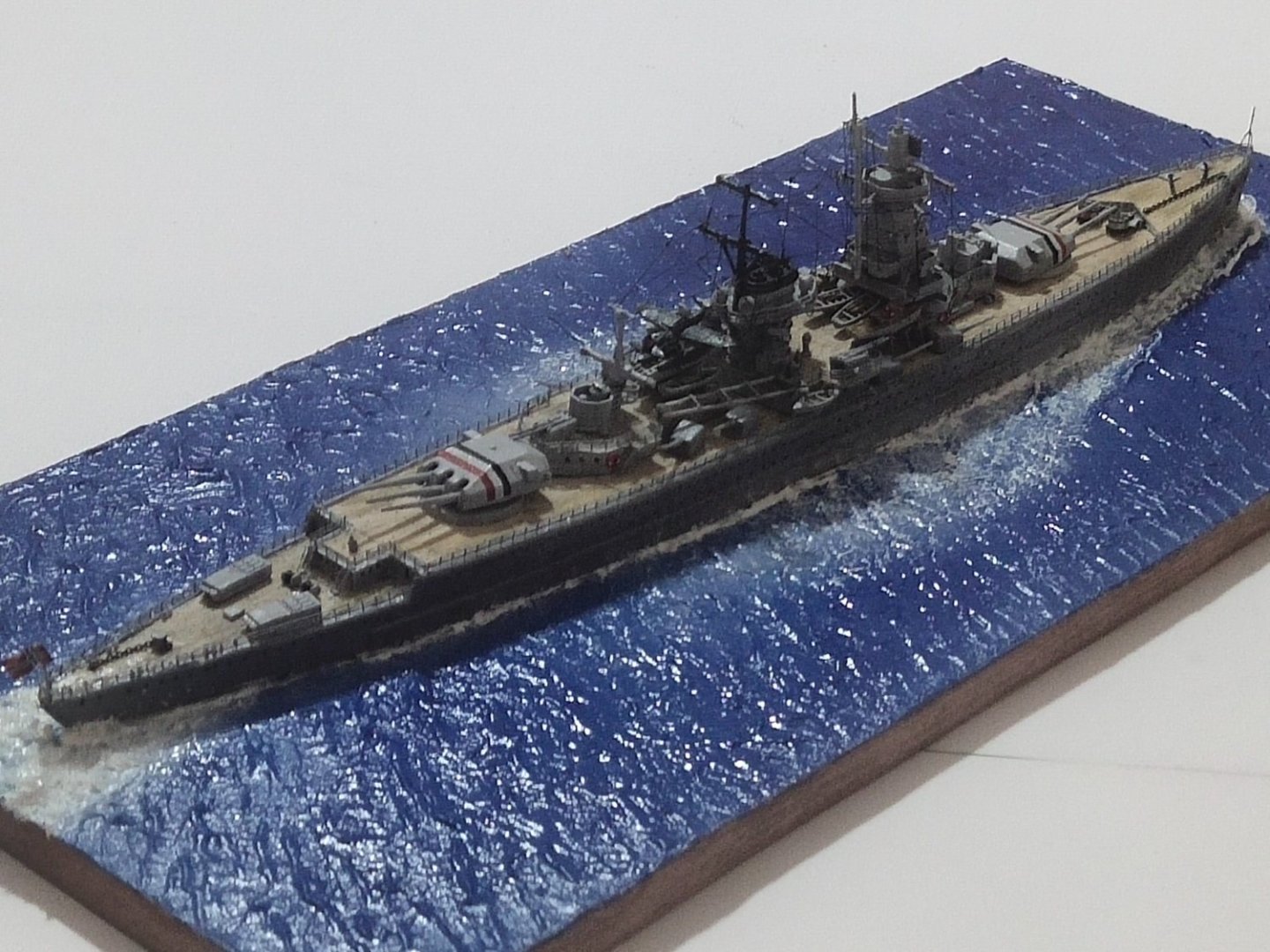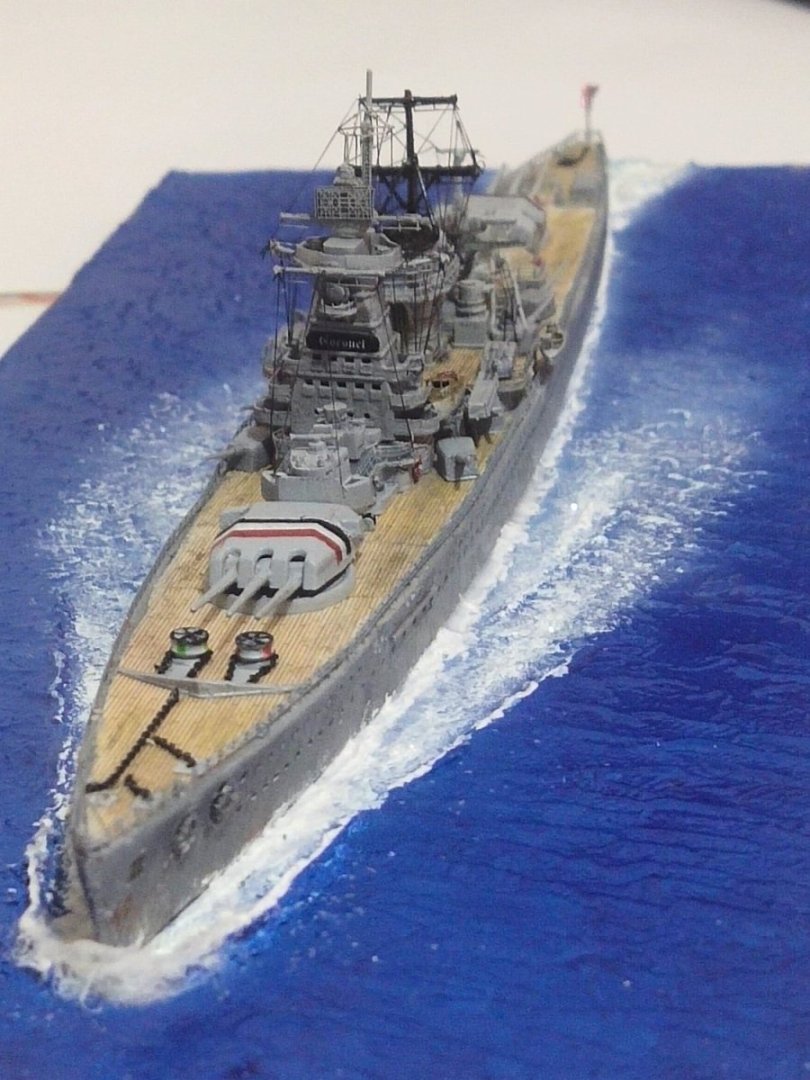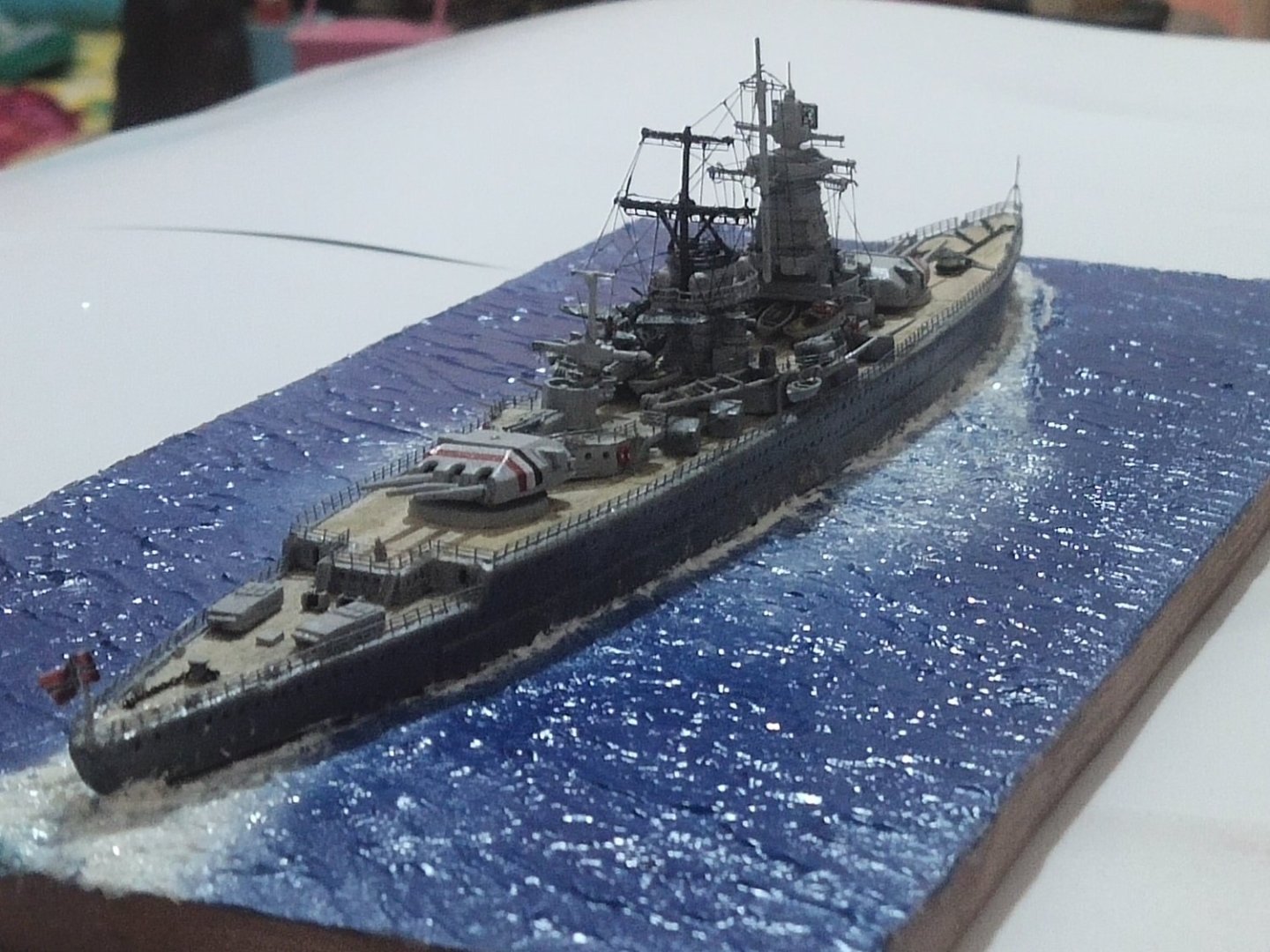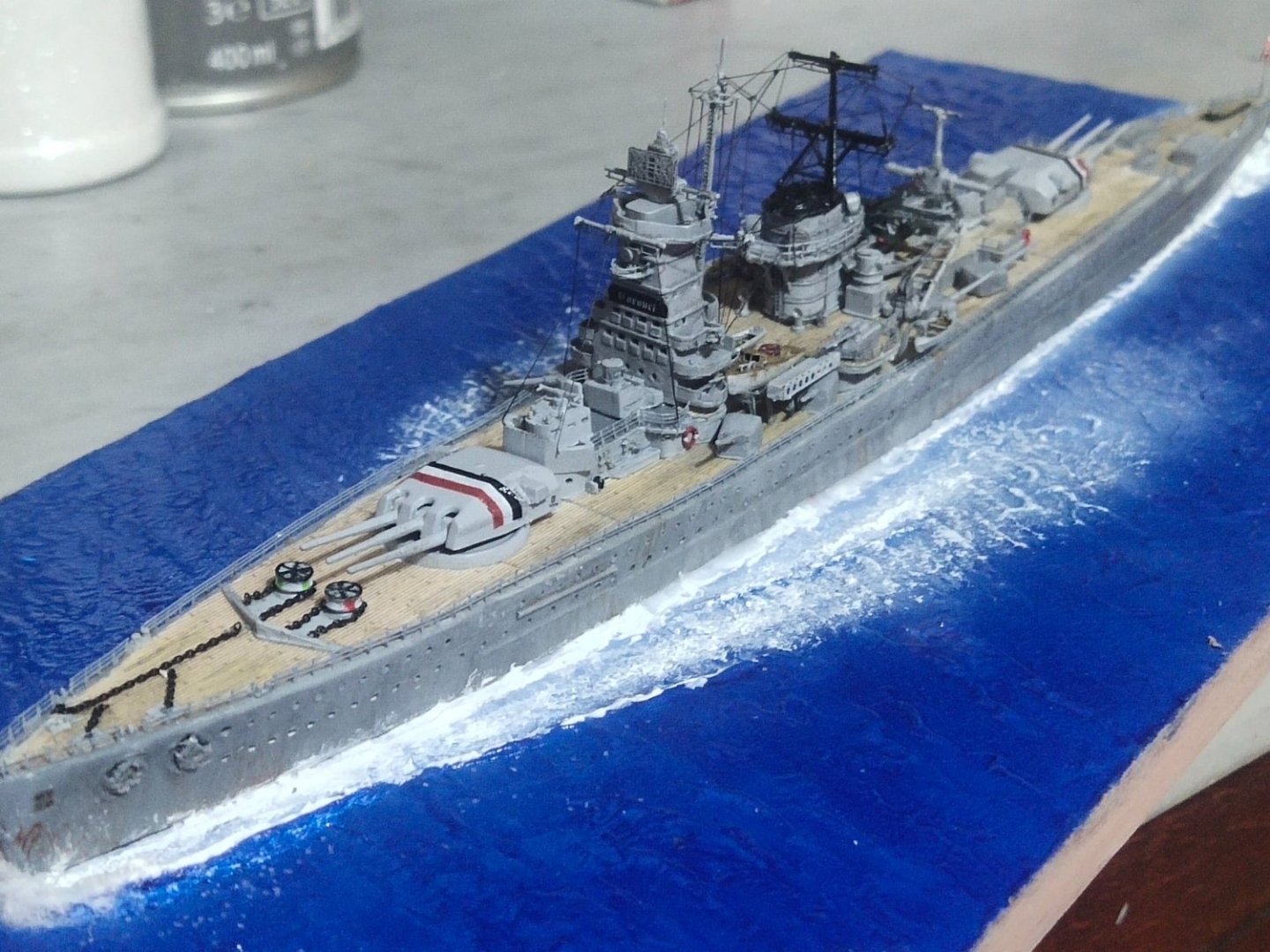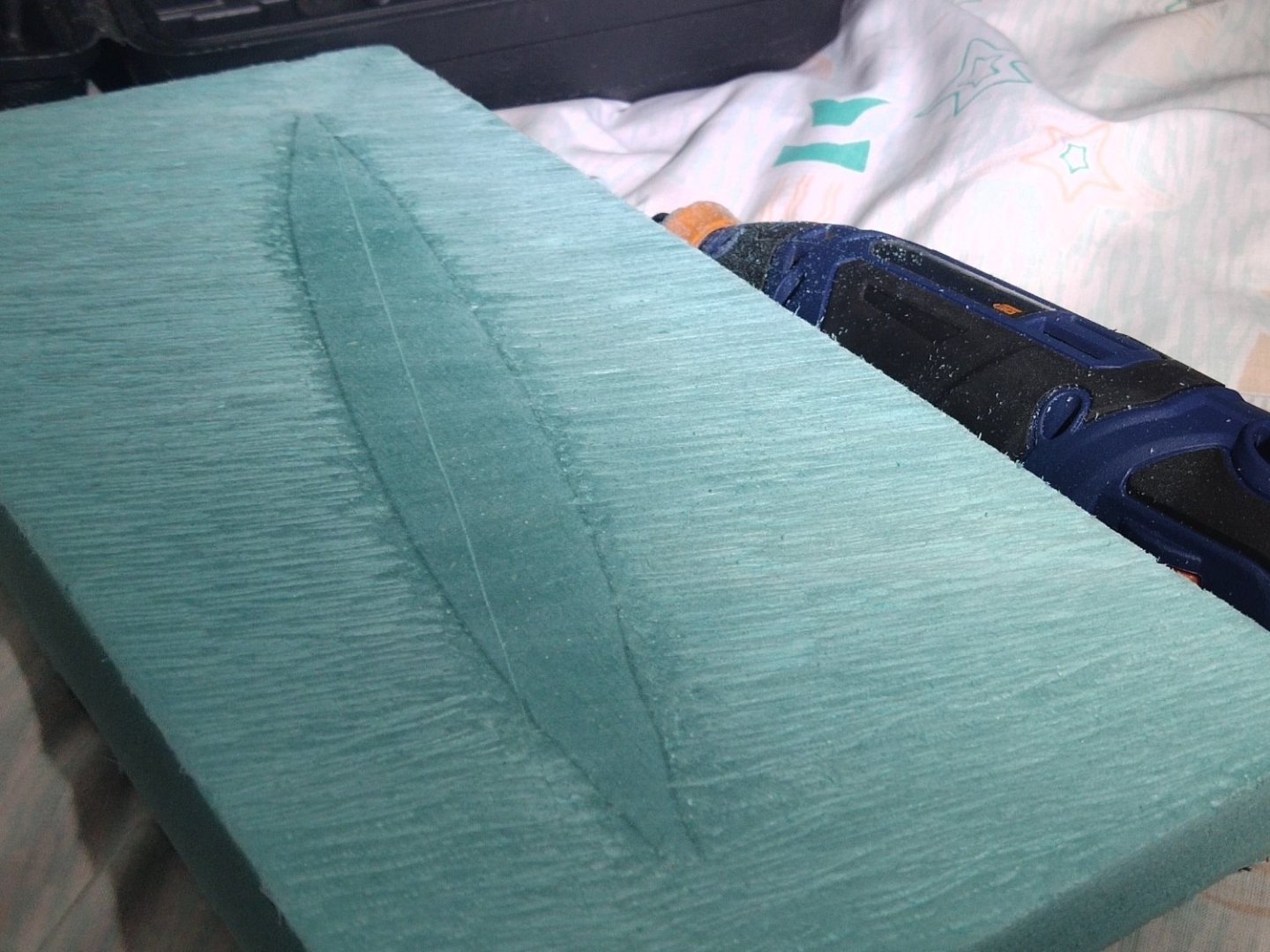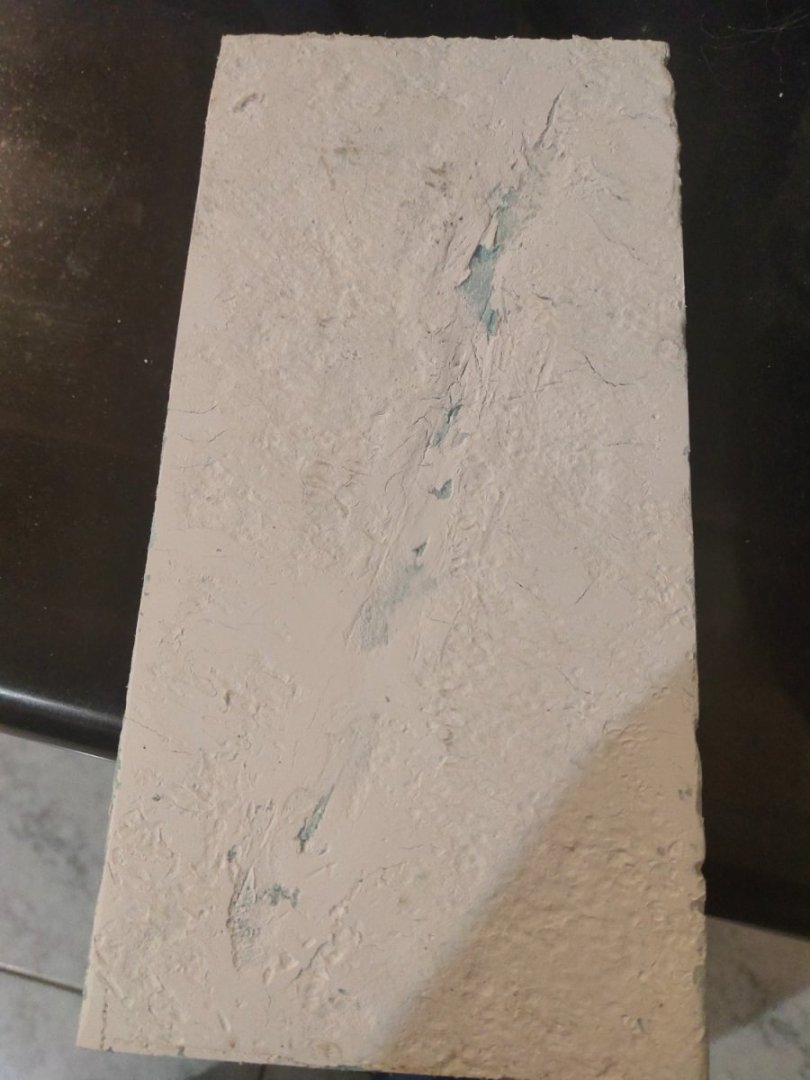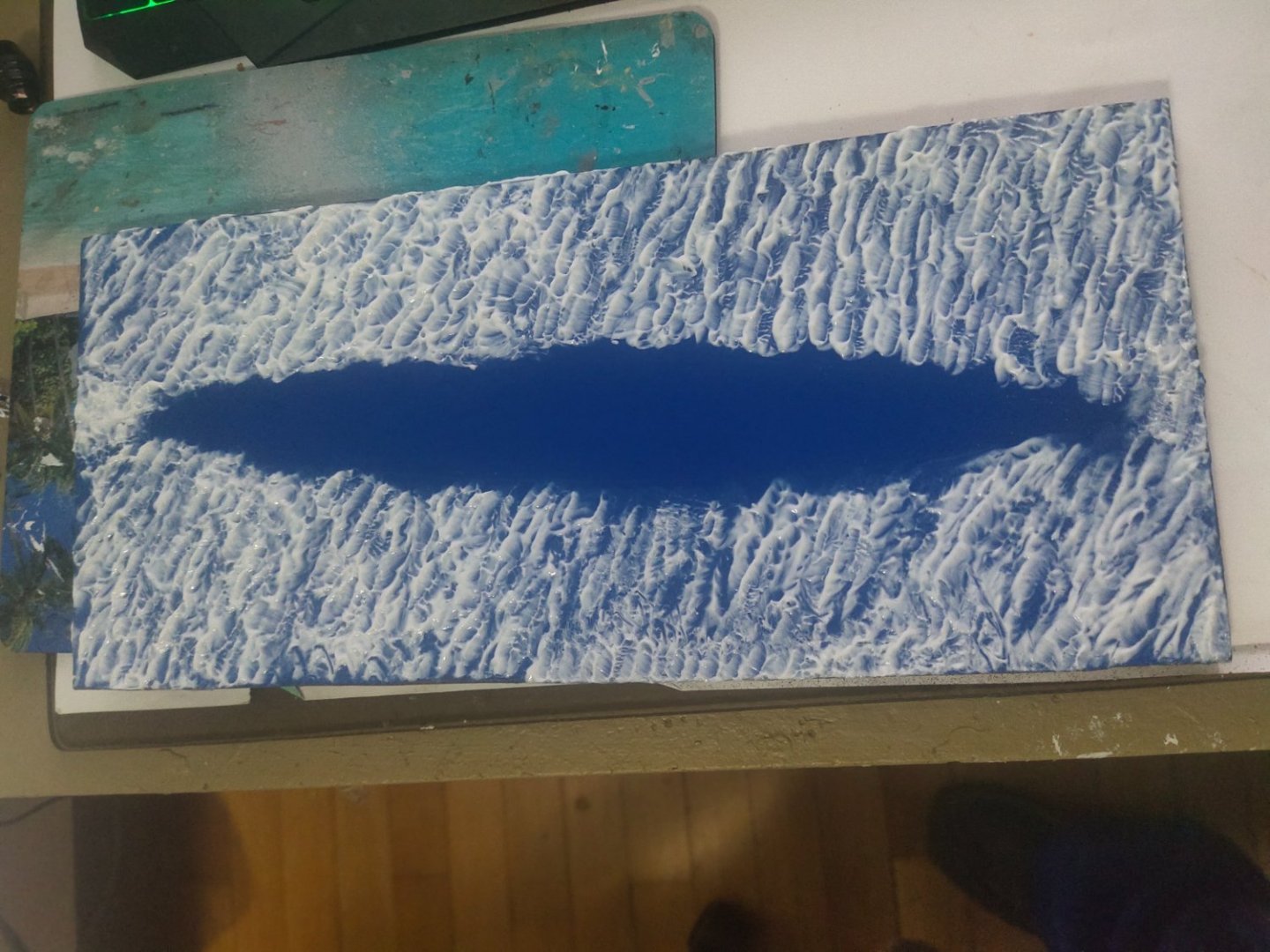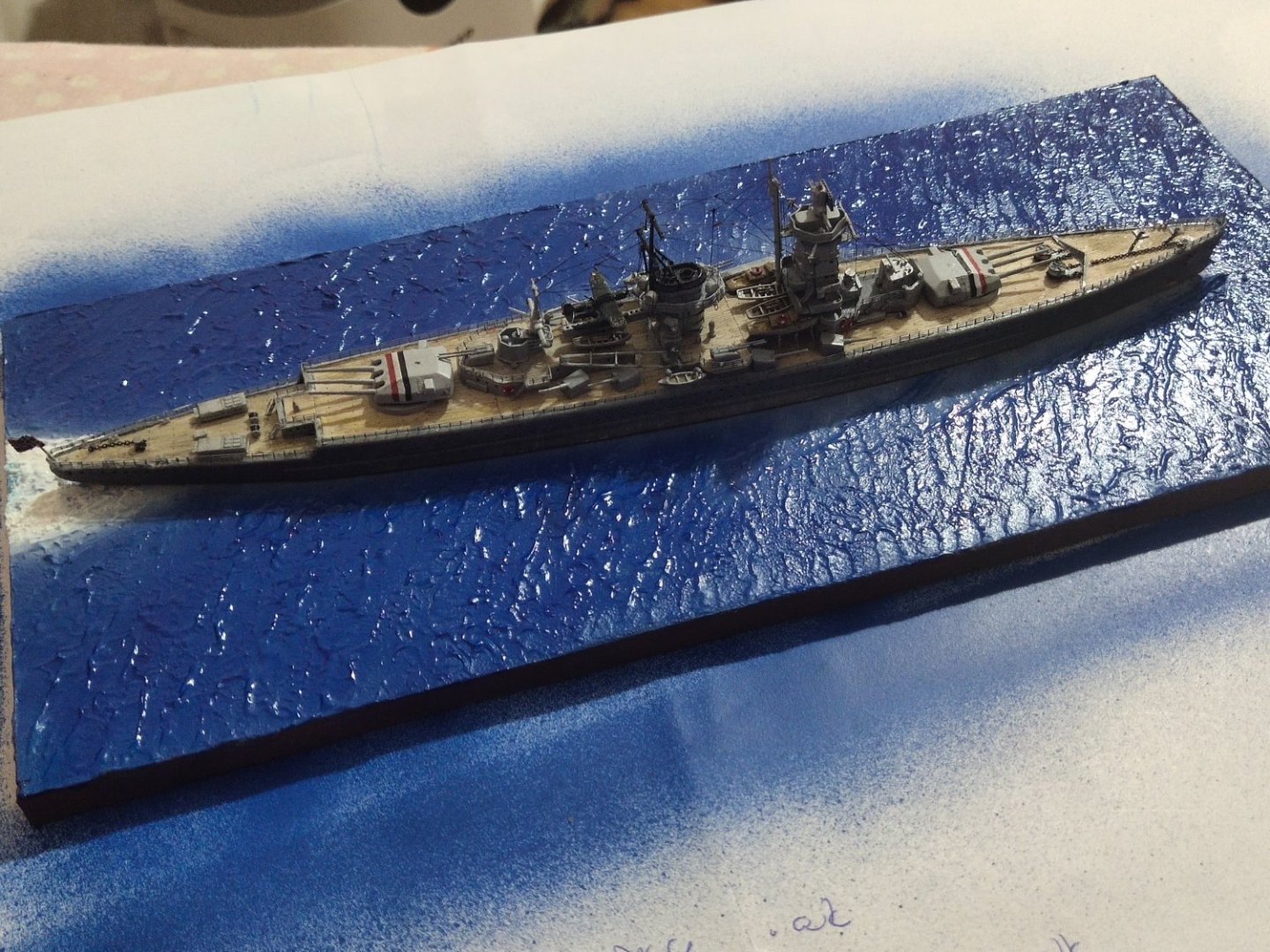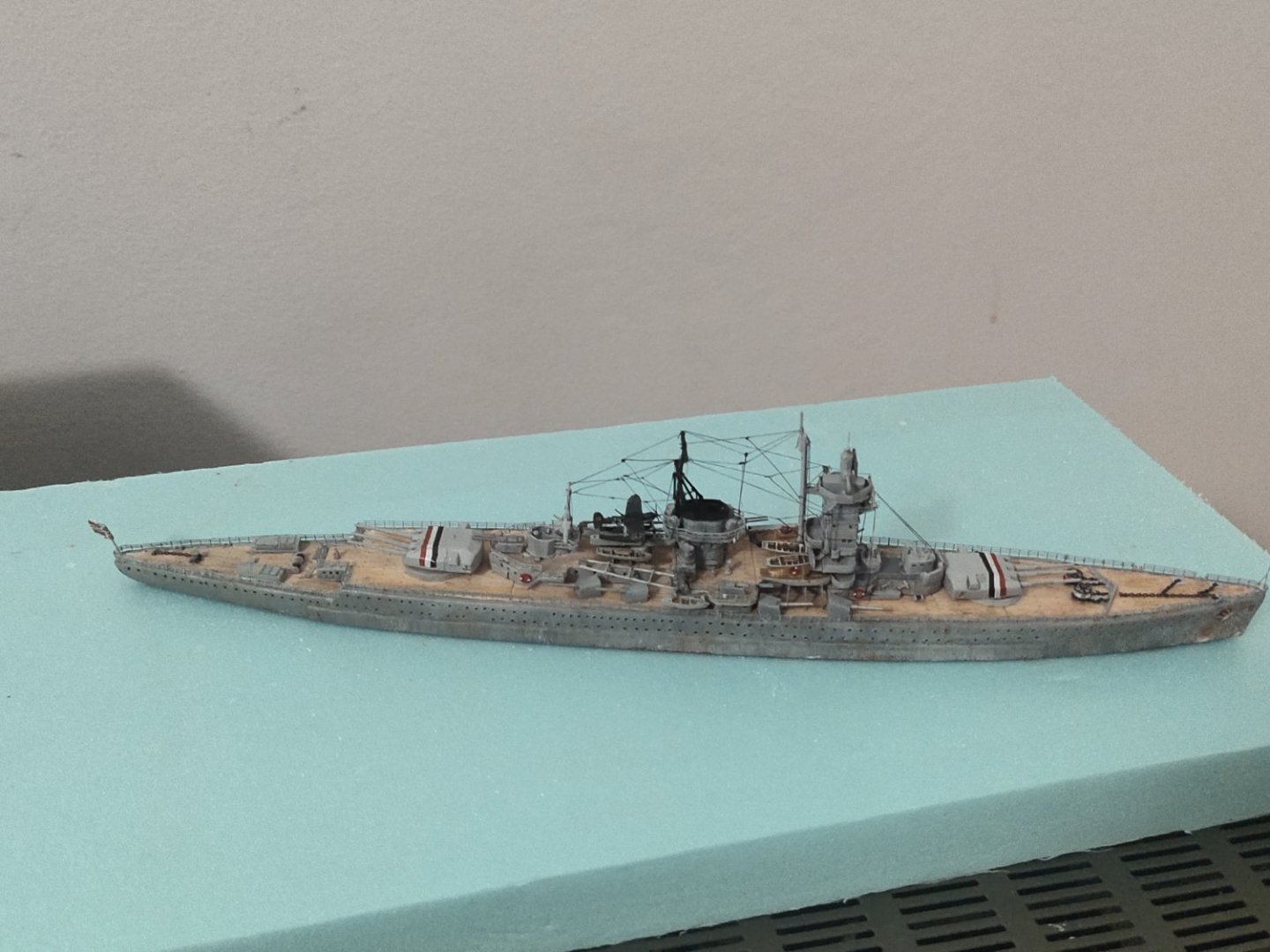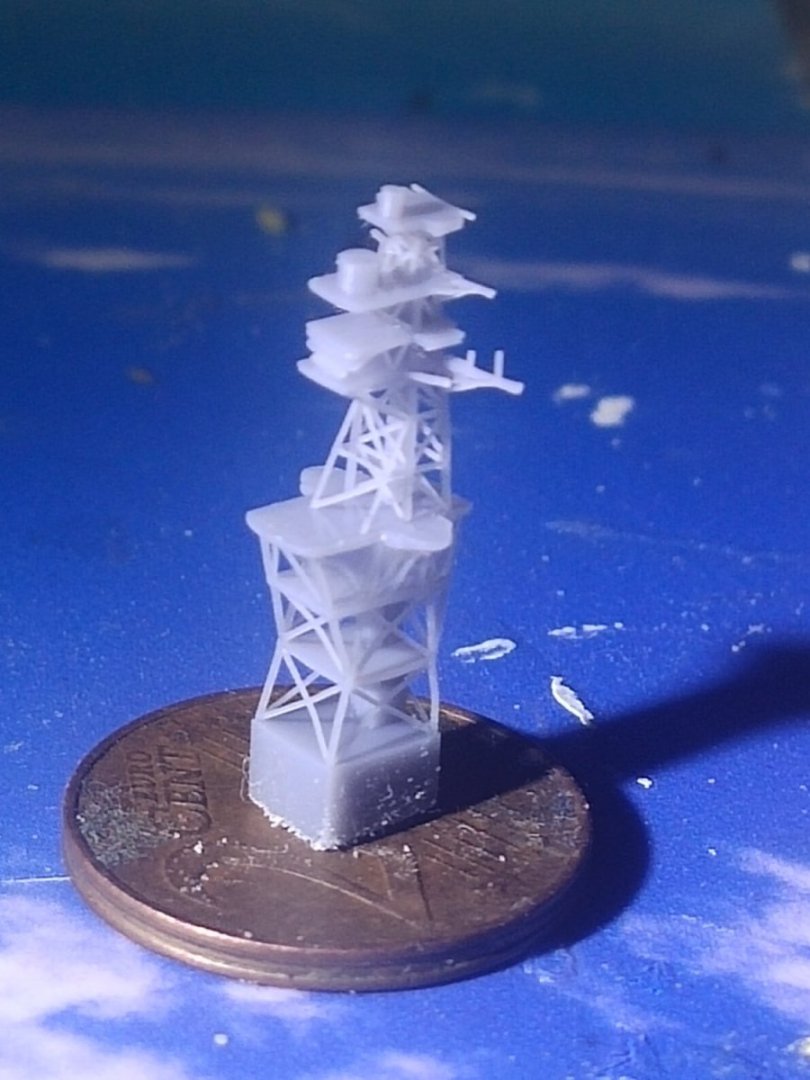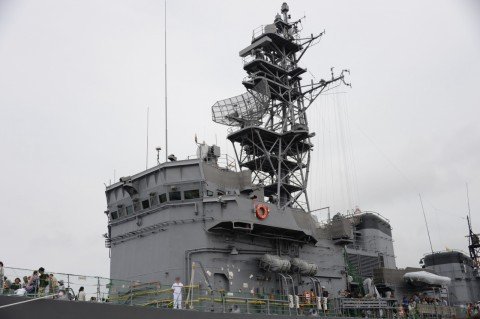
mikegr
Members-
Posts
816 -
Joined
-
Last visited
Content Type
Profiles
Forums
Gallery
Events
Everything posted by mikegr
-
You may consider using snow paste. Ready mix or home made. I use ready one since I bought it but hand made is superior because you can adjust the texture from coarse (usually on waves top) to smooth(wave base and around)by adjusting the portion of baking soda. When dry, you can add silicone bits with a toothpaste to increase the water splash effect. On the right wave I used hair blower on hot so the wave get more foamy because of the baking soda Regardless the chosen method you should lightly airbrush white around areas where foam will sit, to make smoother the transition from white to dark ocean color
- 97 replies
-
Making a very rough sea in 1/350 takes serious skills.
- 97 replies
-
If you consider using cotton and gell for waves make sure the latter is of those that will not get yellowish over time. Personally i consider cotton as an emergency solution as its white color is not white enough, just compare it to white acrylic and see the difference
- 97 replies
-
I pour the resin and added a second part of dock. In my hurry to finish it yesterday I made a rookie mistake and forgot to check it the surface was flat so the small inclination so the resin was distributed unevenly. Anyway the purpose was just to display the ships together.
- 14 replies
-
- Type 45 Destroyer
- Horizon-class
-
(and 1 more)
Tagged with:
-
So I proceed finishing the model with final details. I put it aside with the Horizon class and add a drydock. Tomorrow I will pour the resin. It will be a simple sea representation
- 14 replies
-
- Type 45 Destroyer
- Horizon-class
-
(and 1 more)
Tagged with:
-
I redesigned the forward launcher in more reasonable dimensions and painted the Phalanx. Other details were added like barrel life raft and rings.
- 14 replies
-
- Type 45 Destroyer
- Horizon-class
-
(and 1 more)
Tagged with:
-
So after painting, repainting, fittings, misfittings, repairs and more I got to the point to glue all main pieces together. Now I need to add details, go for final paint job and rigging
- 14 replies
-
- Type 45 Destroyer
- Horizon-class
-
(and 1 more)
Tagged with:
-
- 14 replies
-
- Type 45 Destroyer
- Horizon-class
-
(and 1 more)
Tagged with:
-
Some modelers report 300$ on upgrade parts for a 50$ kit. Though I do not count my spendings, I cannot cope with that
- 97 replies
-
- Curtis Wilbur
- I Love Kit
-
(and 2 more)
Tagged with:
-
- 97 replies
-
- Curtis Wilbur
- I Love Kit
-
(and 2 more)
Tagged with:
-
- 14 replies
-
- Type 45 Destroyer
- Horizon-class
-
(and 1 more)
Tagged with:
-
There is no cure. Whatever the scale there always will be tiny things that have to be worked with absolute precision. Its just the amount of work that differs like painting hulls in 1/200 instead on 1/700
- 97 replies
-
I printed most of the parts.Since I used a plan to calculate the size of the pieces and the PE parts are made to replace standard plastic parts of specific kits some misfitting is expected. Some PEs won't be used as the required details is already designed at the parts I printed.
- 14 replies
-
- Type 45 Destroyer
- Horizon-class
-
(and 1 more)
Tagged with:
-
So I made the second part and glued them together. Light was tested. Some misfittings at the end of the hangar won't be visible so I don't bother.
- 14 replies
-
- Type 45 Destroyer
- Horizon-class
-
(and 1 more)
Tagged with:
-
Next was the hangar. I printed the right half and made some adjustment to fit the PE externally. I made them in separate pieces so I can scratch built the interior more easily them glue them together. Like in Horizon class because of the side compartments for inflatable storage, the heli hangar is somewhat narrow.
- 14 replies
-
- Type 45 Destroyer
- Horizon-class
-
(and 1 more)
Tagged with:
-
Next was to print the central area between the hangar and the bridge where funnels and towers will placed upon. However because of warping problems that I couldn't solve after many attempts, I removed it and replaced it with plywood wrapped with plastic fillets for a smoother finish. This handwork took me 2 hours instead of 2 wasted evenings, what a bitter lesson. Fortunately the other piece, the main canon printed just fine and a barrel made of needle pieces was added along with hand rails.
- 14 replies
-
- Type 45 Destroyer
- Horizon-class
-
(and 1 more)
Tagged with:
-
I made the hull. It looked clumsy and wide. I had to remeasure to get the proper dimensions Excess "fat" was trimmed down and it was shortened by 3 cm. After more careful work I shaped the sides and upon finish wood was polished Then, I add the PE heli deck on rear and a 2.5 mm piece of resin on bow to make the right elevation Finally priming and sanding the bow, stern and the sides, several times.
- 14 replies
-
- Type 45 Destroyer
- Horizon-class
-
(and 1 more)
Tagged with:
-
- 14 replies
-
- Type 45 Destroyer
- Horizon-class
-
(and 1 more)
Tagged with:
-
The lesson of the day. The display looks symmetrical but its not. Snow paste was used to resemble the waves. On the right i used brush with left and right moves with fading effect. On the left my index finger was deeped in the paste then applied on the wood. I found out that the first choice was more appropriate when making long stern wakes as the left and right water moves are quite visible. Perhaps I will try it on a future smaller model as I will need a longer base. So I balanced the sides by using airbrush on the left to fill in partially the blue gaps and by "indexfingering" the right one. Some airbrushing for smoother fading effect and a drizzle of microballoons. Lastly a few glitters on white foamy surfaces along with silicone bits. The model assembly came quite good I would rate is 9 out 10 on my satisfaction scale. The base it wasnt my planned outcome but turned ok. Maybe a few extra gel layers for thicker result would be better. I was pleased by 8 out of 10
-
Thanks. It is an old printed with partially working screen and regular resin. Obviously is good to know how to get the best out of it before upgrade to another model. I experiment a bit with plaster and various tools to form the seabed but all come to dead end so I gave up. Since my target was to create a light wavy sea, foam was replaced by wood. Then used gel to form the waves.A standard method. Only difference this time I use clear blue from Tamiya on top. Tomorrow will proceed with the final details.
About us
Modelshipworld - Advancing Ship Modeling through Research
SSL Secured
Your security is important for us so this Website is SSL-Secured
NRG Mailing Address
Nautical Research Guild
237 South Lincoln Street
Westmont IL, 60559-1917
Model Ship World ® and the MSW logo are Registered Trademarks, and belong to the Nautical Research Guild (United States Patent and Trademark Office: No. 6,929,264 & No. 6,929,274, registered Dec. 20, 2022)
Helpful Links
About the NRG
If you enjoy building ship models that are historically accurate as well as beautiful, then The Nautical Research Guild (NRG) is just right for you.
The Guild is a non-profit educational organization whose mission is to “Advance Ship Modeling Through Research”. We provide support to our members in their efforts to raise the quality of their model ships.
The Nautical Research Guild has published our world-renowned quarterly magazine, The Nautical Research Journal, since 1955. The pages of the Journal are full of articles by accomplished ship modelers who show you how they create those exquisite details on their models, and by maritime historians who show you the correct details to build. The Journal is available in both print and digital editions. Go to the NRG web site (www.thenrg.org) to download a complimentary digital copy of the Journal. The NRG also publishes plan sets, books and compilations of back issues of the Journal and the former Ships in Scale and Model Ship Builder magazines.

